The Duane Crowther Letters Pt. 4

  Happy Thanksgiving y’all! Here are the next two letters that Duane Crowther wrote to Bob Balser in January and February 1953. Duane keeps trying to get in touch with Flora Mock, whom he apparently met while he was a student of William Shull at UCLA . He describes the atmosphere at UPA New York, thriving in spite of the Actor’s strike then going on. They were doing the “Howdy Doody and the Magic Hat” cartoon for Bob Smith, and the theatrical cartoon “Spare The Child”. Duane does quite an analysis of “Spare The Child” in his letter of 2-28-1953. He criticizes Abe Liss, the director of the picture, and sites an “Oedipus situation” in the story. UPA hired Cliff Roberts to do design and backgrounds, effectively relieving Duane of the responsibility. Duane remained in touch with Cliff and was still using him for jobs at Duck Soup in the 1980s and 90s. You’ll see a few opening chess moves on page one of the 2-28-53 letter, Duane played chess all his life. Bob Balser told me that Duane learned a lot of advanced moves from a chess master that Duane met in Japan when he was in the Armed Forces (see The Duane Crowther Letters, Part One). This knowledge served Duane very well, even to the time of his illness, when he could hardly talk, Duane was still playing chess in his sick bed, and LETTING BOB WIN! Evidently Duane was interested in cryptography as well, look at the back of the envelope for the 2-28-53 letter above, and you’ll see an alphabet with odd symbols next to the letters. Either they are code, or Greek, I can’t tell. More of these little pieces of Duane’s history to come.
 Happy Thanksgiving y’all! Here are the next two letters that Duane Crowther wrote to Bob Balser in January and February 1953. Duane keeps trying to get in touch with Flora Mock, whom he apparently met while he was a student of William Shull at UCLA . He describes the atmosphere at UPA New York, thriving in spite of the Actor’s strike then going on. They were doing the “Howdy Doody and the Magic Hat” cartoon for Bob Smith, and the theatrical cartoon “Spare The Child”. Duane does quite an analysis of “Spare The Child” in his letter of 2-28-1953. He criticizes Abe Liss, the director of the picture, and sites an “Oedipus situation” in the story. UPA hired Cliff Roberts to do design and backgrounds, effectively relieving Duane of the responsibility. Duane remained in touch with Cliff and was still using him for jobs at Duck Soup in the 1980s and 90s. You’ll see a few opening chess moves on page one of the 2-28-53 letter, Duane played chess all his life. Bob Balser told me that Duane learned a lot of advanced moves from a chess master that Duane met in Japan when he was in the Armed Forces (see The Duane Crowther Letters, Part One). This knowledge served Duane very well, even to the time of his illness, when he could hardly talk, Duane was still playing chess in his sick bed, and LETTING BOB WIN! Evidently Duane was interested in cryptography as well, look at the back of the envelope for the 2-28-53 letter above, and you’ll see an alphabet with odd symbols next to the letters. Either they are code, or Greek, I can’t tell. More of these little pieces of Duane’s history to come.
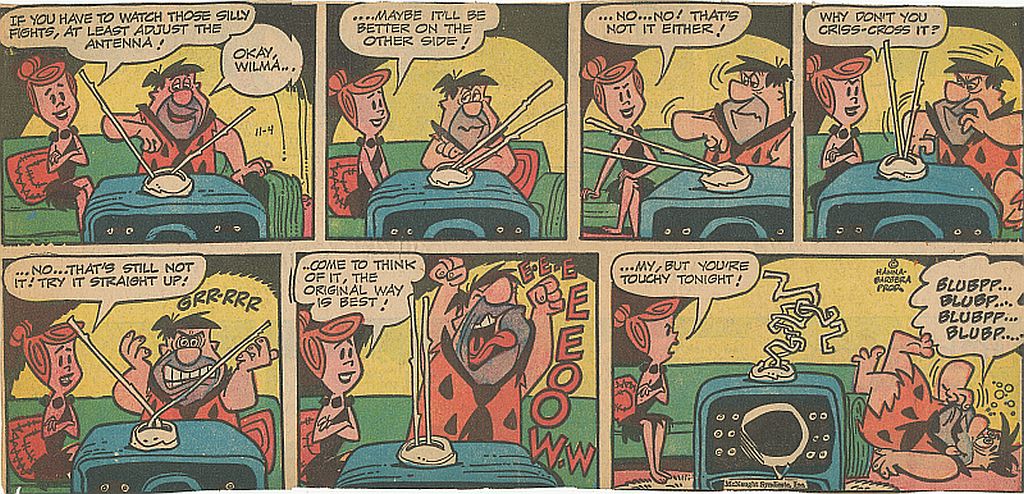


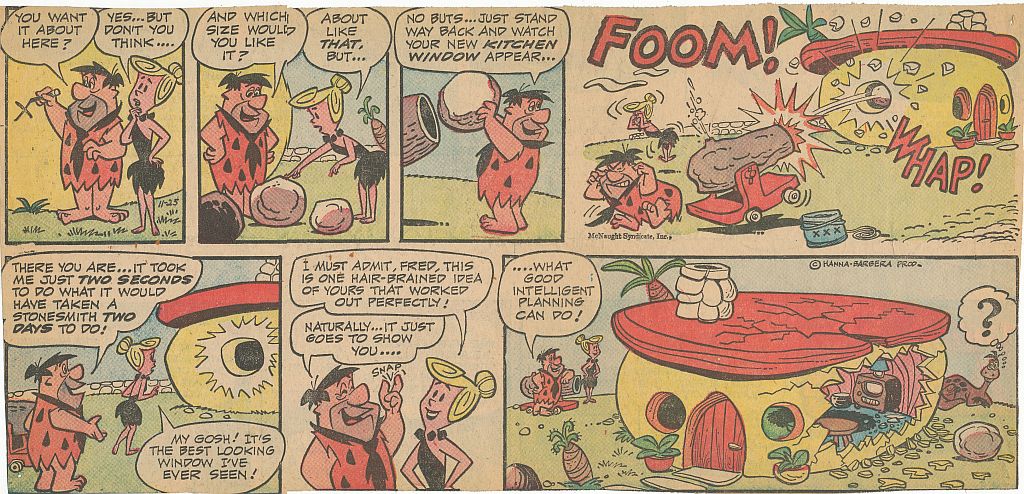 Â In response to Yowp’s blog, here are the Flintstones 1/3rd page Sundays from November, 1962. Some of these may have been the work of Dick Bickenbach, but the 4th and the 11th seem to be the work of an animator to me, judging by how pushed the poses are. Let me know what you think. To see the 1/2 page versions of these in black and white, head over to Yowp’s blog (link is to the right of the page). You’ll see many fascinating historic screeds, although how Yowp has time to write and assemble them all continues to puzzle me. Remember, just click on the thumbnails above to see them full size. May you all have good things to eat on Thanksgiving.
 In response to Yowp’s blog, here are the Flintstones 1/3rd page Sundays from November, 1962. Some of these may have been the work of Dick Bickenbach, but the 4th and the 11th seem to be the work of an animator to me, judging by how pushed the poses are. Let me know what you think. To see the 1/2 page versions of these in black and white, head over to Yowp’s blog (link is to the right of the page). You’ll see many fascinating historic screeds, although how Yowp has time to write and assemble them all continues to puzzle me. Remember, just click on the thumbnails above to see them full size. May you all have good things to eat on Thanksgiving.
The Duane Crowther Letters Pt. 3
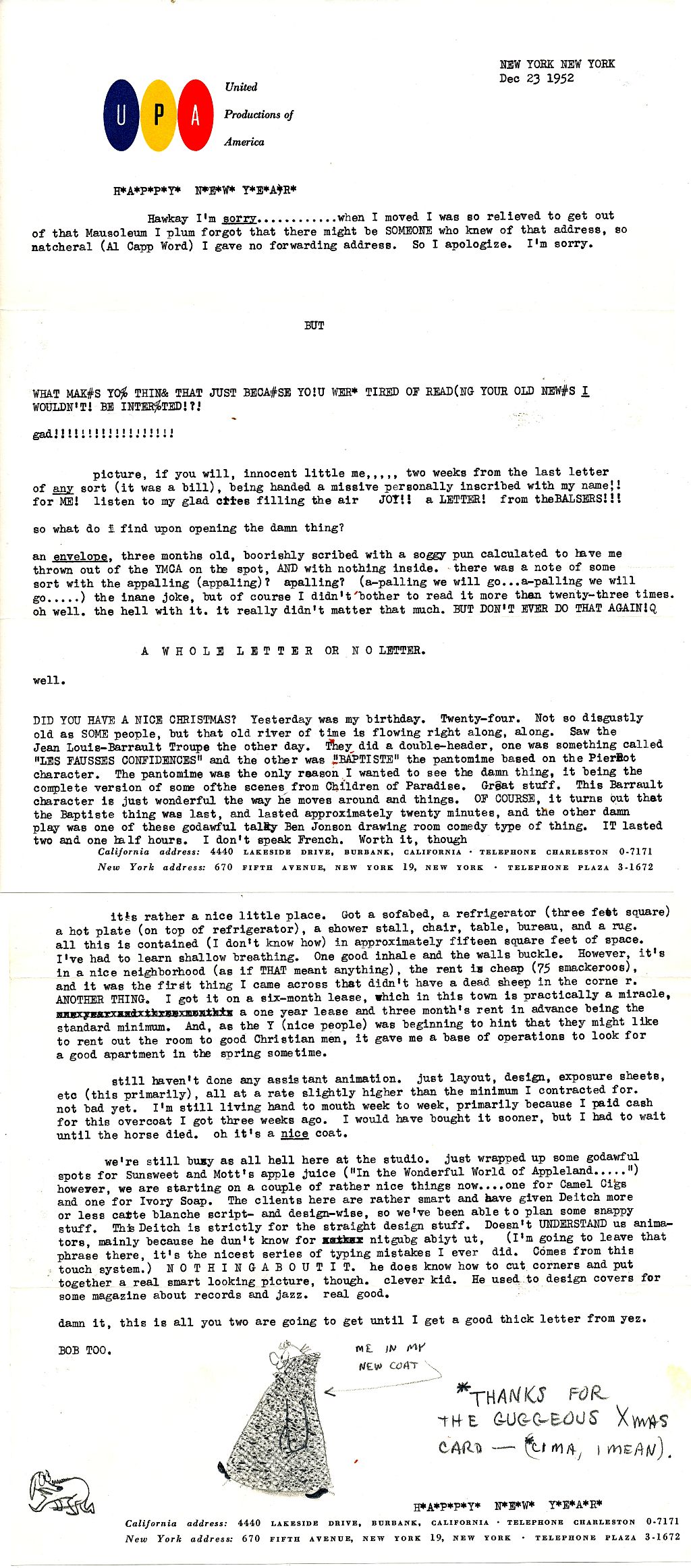
  Here are two more in my continuing series of Duane Crowther’s letters to Bob Balser from New York, dated 12-23-52 and 1-6-53. In the 12-23, Duane continues his running joke with Bob about typewriter snafus and the mistakes caused by the “touch system”. Duane was quite the student of pantomime, and went to see the Jean Louis-Barrault Troupe perform a 20 minute sketch. Duane has to sit through a 2 and a half-hour drawing room comedy beforehand, though, and he didn’t speak French! He also ribs Gene Deitch for being into “the straight design stuff” and “Doesn’t UNDERSTAND us animators..(knows) NOTHING ABOUT IT.” Duane really liked Gene’s design ability, as you’ll read. Duane had moved out of the YMCA by this time, and his description of his apartment is very funny, cost him a whopping 75 bucks a month! Note the little drawing of Duane with his new coat and the little dog at the left margin. In the 1-6 letter, Duane criticizes Chaplin’s “Limelight”, asks for a print of “Waiting” by Flora Mock (see his March 5, 1952 letter in “The Duane Crowther Letters Pt. 1”), and fakes Bob Balser out by deliberately not putting a page one in his letter, because Bob failed to put a header on his letter. It would be interesting to read Bob Balser’s side of the correspondence, but Duane probably didn’t keep them. He was not a “saver”, as I remember. Duane concludes the letter with a little drawing of a lady being scared by a spider hiding in a typewriter, which seems to be another running gag between Bob Balser and Duane. Charles Brubaker and Mike Sporn both like these letters and want to see more! I’m especially pleased that Mike is reading them, since he is a consummate film-maker, blogger, and New Yorker, choose your own order.
 Here are two more in my continuing series of Duane Crowther’s letters to Bob Balser from New York, dated 12-23-52 and 1-6-53. In the 12-23, Duane continues his running joke with Bob about typewriter snafus and the mistakes caused by the “touch system”. Duane was quite the student of pantomime, and went to see the Jean Louis-Barrault Troupe perform a 20 minute sketch. Duane has to sit through a 2 and a half-hour drawing room comedy beforehand, though, and he didn’t speak French! He also ribs Gene Deitch for being into “the straight design stuff” and “Doesn’t UNDERSTAND us animators..(knows) NOTHING ABOUT IT.” Duane really liked Gene’s design ability, as you’ll read. Duane had moved out of the YMCA by this time, and his description of his apartment is very funny, cost him a whopping 75 bucks a month! Note the little drawing of Duane with his new coat and the little dog at the left margin. In the 1-6 letter, Duane criticizes Chaplin’s “Limelight”, asks for a print of “Waiting” by Flora Mock (see his March 5, 1952 letter in “The Duane Crowther Letters Pt. 1”), and fakes Bob Balser out by deliberately not putting a page one in his letter, because Bob failed to put a header on his letter. It would be interesting to read Bob Balser’s side of the correspondence, but Duane probably didn’t keep them. He was not a “saver”, as I remember. Duane concludes the letter with a little drawing of a lady being scared by a spider hiding in a typewriter, which seems to be another running gag between Bob Balser and Duane. Charles Brubaker and Mike Sporn both like these letters and want to see more! I’m especially pleased that Mike is reading them, since he is a consummate film-maker, blogger, and New Yorker, choose your own order.






 Felix, from 9-30 to 10-6-1935, continues Felix’s adventures as a stowaway. Thanks to the little gold idol he stole from the Ape’s island, Felix continues to elude the sailors who are after him. The Chinese cook, Wong, in the 10-3, is a harbinger of the Tong intrigue coming to Felix’s world. In the 10-6 Sunday, the Professor swabs Felix with a powerful anesthetic, which makes him insensible to pain! Felix swipes two hamburgers from a lunch counter and is unhurt by the blows from Joe, the proprietor. Felix proves his humanity in the last panel, as he vows to chase the mice out of Joe’s place someday, to pay him for the hamburgers.
Felix, from 9-30 to 10-6-1935, continues Felix’s adventures as a stowaway. Thanks to the little gold idol he stole from the Ape’s island, Felix continues to elude the sailors who are after him. The Chinese cook, Wong, in the 10-3, is a harbinger of the Tong intrigue coming to Felix’s world. In the 10-6 Sunday, the Professor swabs Felix with a powerful anesthetic, which makes him insensible to pain! Felix swipes two hamburgers from a lunch counter and is unhurt by the blows from Joe, the proprietor. Felix proves his humanity in the last panel, as he vows to chase the mice out of Joe’s place someday, to pay him for the hamburgers.





 Â Krazy continues to entertain Current, his Jelly Fish visitor in the 8-11 through 8-16-1941 strips. This adds to the story begun in the previous week’s strips, posted in “The Duane Crowther Letters Pt. One”. Herriman spins all kinds of verbal and visual puns out of the parade of fishy characters that flop in Krazy’s house all week, including an Angel Fish, a Flying “Fitch”, a Star Fish and an Electric Eel. Keep reading, folks, I’ll be seeing you soon.
 Krazy continues to entertain Current, his Jelly Fish visitor in the 8-11 through 8-16-1941 strips. This adds to the story begun in the previous week’s strips, posted in “The Duane Crowther Letters Pt. One”. Herriman spins all kinds of verbal and visual puns out of the parade of fishy characters that flop in Krazy’s house all week, including an Angel Fish, a Flying “Fitch”, a Star Fish and an Electric Eel. Keep reading, folks, I’ll be seeing you soon.
The Junior Times Feb. 1927
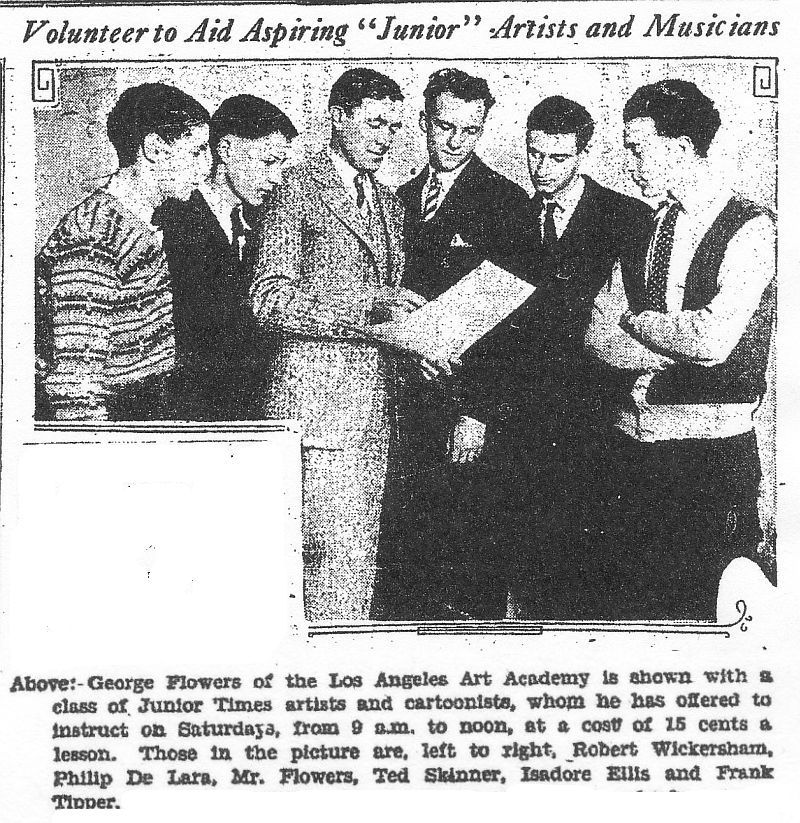  Wow, art instruction for 15 cents a lesson! That’s what the future animators of the 1930s were paying in 1927 courtesy of the Los Angeles Junior Times. You’ll note that Bob Wickersham, Phil De Lara, Izzy Ellis and Frank Tipper were among the students on those halcyon Saturdays in Los Angeles. You’ll also note Bob Wickersham doing his best Chaplin impression for Aunt Dolly’s Hi-Jinks in the photo below. Also if you look down the page, you’ll see the comic strips and editorial drawings for the Junior Times by Izzy Ellis (Hezy Tate, Pearl Handle), Bill Zaboly (Lucky Lem), Bob Wickersham (Fido Bark), Morey Reden (Highshine Joe, Jim Dandy), Isadore Ellis (Incidents in Lives of Famous Characters) and Frank Tipper (The Average Home). These cartoons all appeared in February of 1927. Even though Aunt Dolly expressly forbade continuity, you will notice that Jim Dandy and Fido Bark still use it. Fido Bark is a printed out of sequence.
 Wow, art instruction for 15 cents a lesson! That’s what the future animators of the 1930s were paying in 1927 courtesy of the Los Angeles Junior Times. You’ll note that Bob Wickersham, Phil De Lara, Izzy Ellis and Frank Tipper were among the students on those halcyon Saturdays in Los Angeles. You’ll also note Bob Wickersham doing his best Chaplin impression for Aunt Dolly’s Hi-Jinks in the photo below. Also if you look down the page, you’ll see the comic strips and editorial drawings for the Junior Times by Izzy Ellis (Hezy Tate, Pearl Handle), Bill Zaboly (Lucky Lem), Bob Wickersham (Fido Bark), Morey Reden (Highshine Joe, Jim Dandy), Isadore Ellis (Incidents in Lives of Famous Characters) and Frank Tipper (The Average Home). These cartoons all appeared in February of 1927. Even though Aunt Dolly expressly forbade continuity, you will notice that Jim Dandy and Fido Bark still use it. Fido Bark is a printed out of sequence.
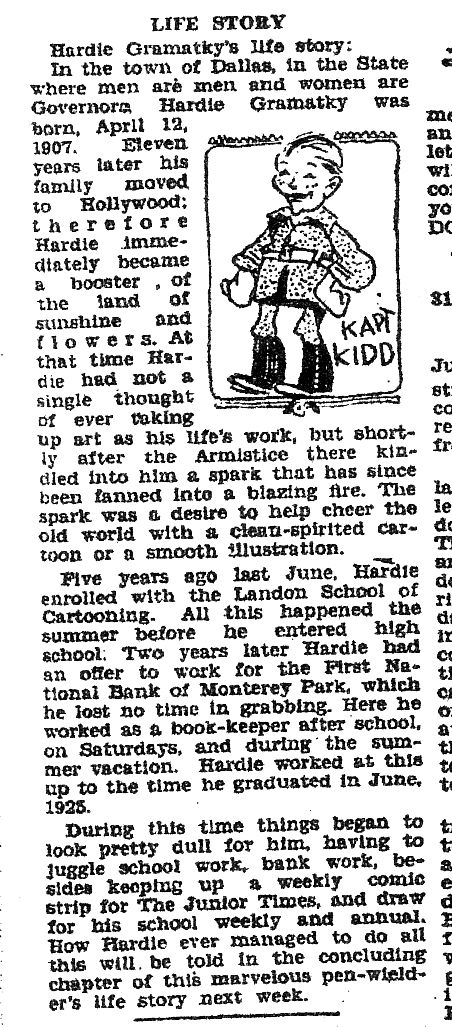 Â Hardie Gramatky was a busy little guy, according to his bio printed in the Junior Times. He took cartooning classes with correspondence school, the Landon School of Cartooning. Like Joe Barbera, Hardie worked in a bank before becoming a full time cartoonist. I don’t know if the Junior Times ever ran a part two of this biography, I couldn’t find it. These Junior Times posts are the most labor intensive ones I do, so I hope you readers enjoy them.
 Hardie Gramatky was a busy little guy, according to his bio printed in the Junior Times. He took cartooning classes with correspondence school, the Landon School of Cartooning. Like Joe Barbera, Hardie worked in a bank before becoming a full time cartoonist. I don’t know if the Junior Times ever ran a part two of this biography, I couldn’t find it. These Junior Times posts are the most labor intensive ones I do, so I hope you readers enjoy them.
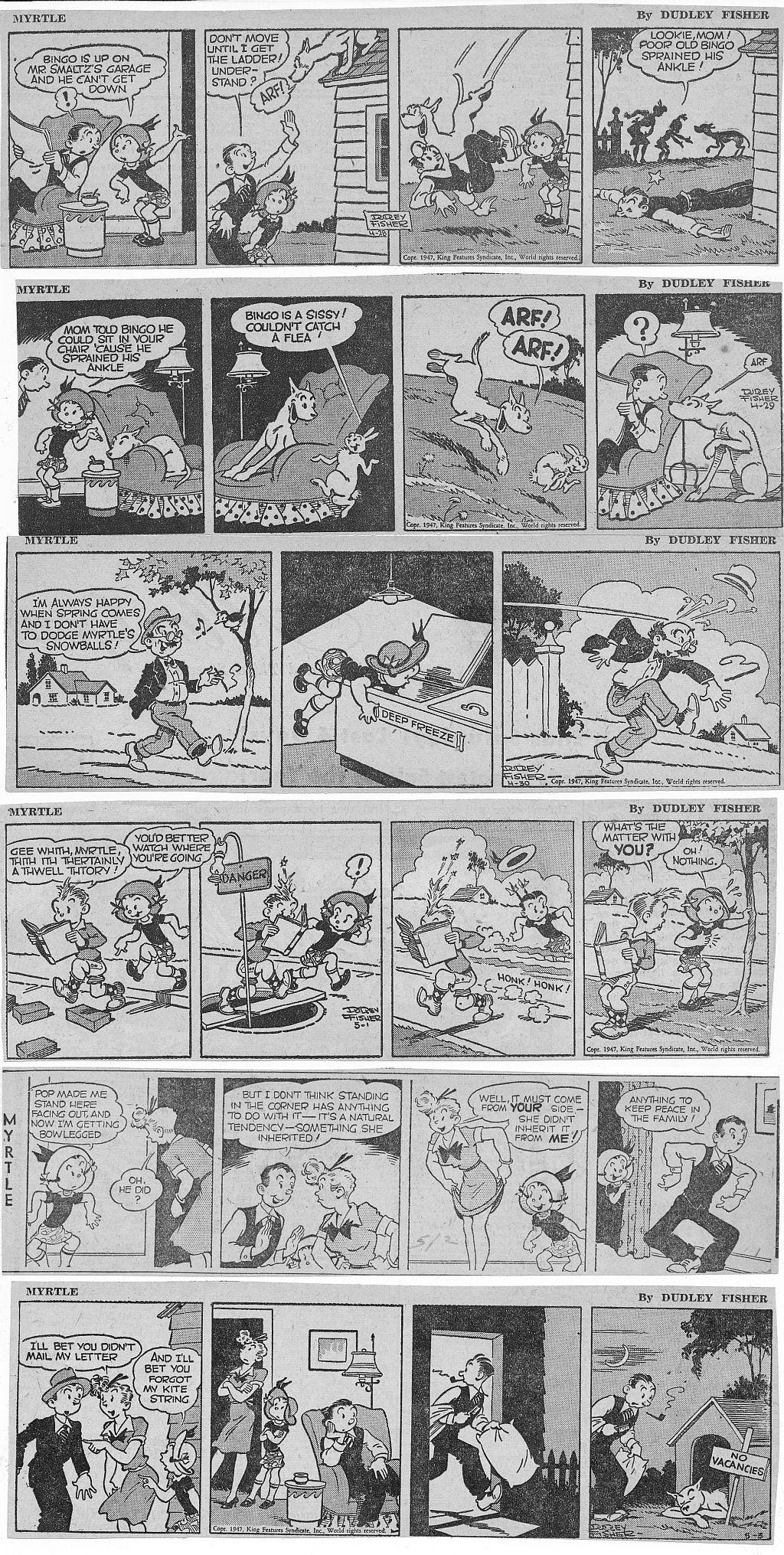 Â Here’s Myrtle, from 4-28 to 5-3-1947. Dudley Fisher is really in top form in the 4-28 and 4-29 strips, I love how Bingo leaps off the roof and graps Pa’s head in his two paws in a really human looking grip. I like the use of silhouette in the last panel with Pa lying prone in the foreground with a star coming out of his head. I love the business in the 4-29 of Bingo chasing his friend the rabbit with his sprained ankle, and then appealing to Pa for sympathy in the last panel. These strips are loaded with great poses and appealing drawing. The Myrtle dailies featured the kind of cartooning we used to take for granted. See you next time.
 Here’s Myrtle, from 4-28 to 5-3-1947. Dudley Fisher is really in top form in the 4-28 and 4-29 strips, I love how Bingo leaps off the roof and graps Pa’s head in his two paws in a really human looking grip. I like the use of silhouette in the last panel with Pa lying prone in the foreground with a star coming out of his head. I love the business in the 4-29 of Bingo chasing his friend the rabbit with his sprained ankle, and then appealing to Pa for sympathy in the last panel. These strips are loaded with great poses and appealing drawing. The Myrtle dailies featured the kind of cartooning we used to take for granted. See you next time.
The Duane Crowther Letters Pt. 2
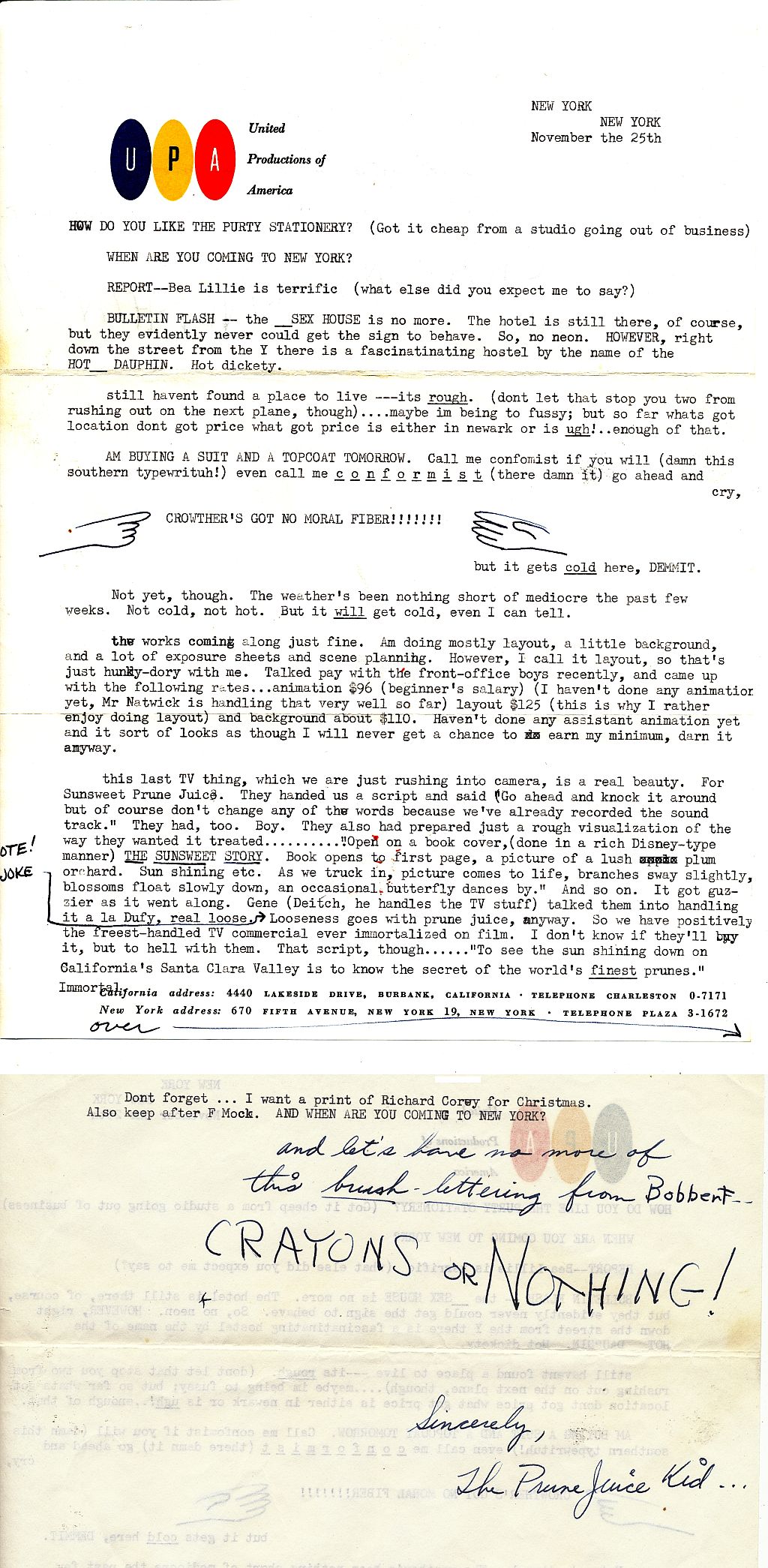 Â As a tribute to both Duane Crowther and the fine (battered) city of New York, we present his letters to Bob (Bobbert) and Cima Balser from Nov. 12th and 25th, 1952. Duane could stay at the YMCA in N.Y. in those days for $2.50 a night! Winter coats were only $125.00, and he was doing TV commercial layout for the great Gene Deitch! What a life, seeing Beatrice Lillie performing live, dishing on Radio City Music Hall and the Rockettes, going to art shows at the Museum of Modern Art. This was New York City at it’s most artistic and user-friendly. I thought that Mike Sporn and Greg Ford in particular might enjoy reading these. I love Duane’s drawing on the back of the Nov. 12th letter, note he’s walking on a sidewalk heating grate! He draws himself a little like Waldo, don’t you think? I love Duane’s jokes about the Sunsweet Prunes commercial he worked on in the 11-25 letter: “Looseness goes with prune juice, anyway.” (He writes in the margin: “Note! Joke..((It’s a bit cut-off from my scanner.))) These letters are reproduced through the courtesy of Cathy Karol-Crowther, Duane’s widow. It’s so wonderful that Bob and Cima Balser kept these letters.
 As a tribute to both Duane Crowther and the fine (battered) city of New York, we present his letters to Bob (Bobbert) and Cima Balser from Nov. 12th and 25th, 1952. Duane could stay at the YMCA in N.Y. in those days for $2.50 a night! Winter coats were only $125.00, and he was doing TV commercial layout for the great Gene Deitch! What a life, seeing Beatrice Lillie performing live, dishing on Radio City Music Hall and the Rockettes, going to art shows at the Museum of Modern Art. This was New York City at it’s most artistic and user-friendly. I thought that Mike Sporn and Greg Ford in particular might enjoy reading these. I love Duane’s drawing on the back of the Nov. 12th letter, note he’s walking on a sidewalk heating grate! He draws himself a little like Waldo, don’t you think? I love Duane’s jokes about the Sunsweet Prunes commercial he worked on in the 11-25 letter: “Looseness goes with prune juice, anyway.” (He writes in the margin: “Note! Joke..((It’s a bit cut-off from my scanner.))) These letters are reproduced through the courtesy of Cathy Karol-Crowther, Duane’s widow. It’s so wonderful that Bob and Cima Balser kept these letters.


  Yowp just put the b/w “tab’ versions of these half-page Yogi Bear Sunday pages from Nov. 1962 on his website. Go there by clicking the link to your right and read what he has to say about the comics. Harvey Eisenberg drew and lettered all four of these. His “Yogi Bear” logos were always distinctive, in a very slick way. I, too like the cow/fresh buttermilk gag in the 11-25 page. Duane would hate his letters being on the same page as these H-B Sundays. He never had any respect for their cartoons, going all the way back to the first Tom and Jerrys. He DID like some of the artists who worked on the H-B stuff, however. He really got along well with George Nicholas, and I remember the two of them playing chess at Fred Calvert’s old studio. Remember California readers, vote “Yes” on Prop. 37! Go to Itza Cat’s Facebook page: www.facebook.com/someothercat to see his political posters about “Frankenfoods”. See you here again soon!
 Yowp just put the b/w “tab’ versions of these half-page Yogi Bear Sunday pages from Nov. 1962 on his website. Go there by clicking the link to your right and read what he has to say about the comics. Harvey Eisenberg drew and lettered all four of these. His “Yogi Bear” logos were always distinctive, in a very slick way. I, too like the cow/fresh buttermilk gag in the 11-25 page. Duane would hate his letters being on the same page as these H-B Sundays. He never had any respect for their cartoons, going all the way back to the first Tom and Jerrys. He DID like some of the artists who worked on the H-B stuff, however. He really got along well with George Nicholas, and I remember the two of them playing chess at Fred Calvert’s old studio. Remember California readers, vote “Yes” on Prop. 37! Go to Itza Cat’s Facebook page: www.facebook.com/someothercat to see his political posters about “Frankenfoods”. See you here again soon!
The Duane Crowther Letters Part One
From the collection of Robert Balser, we present a few letters that my late friend and boss, Duane Crowther, wrote in the early 1950s mostly to Robert Balser, or as Duane called him: “Bobbert”. The first letter from 1-29-1951 is written to a Major Harback, who evidently had some kind of Armed Forces Animation studio. Duane had been inducted into the Army as a Corporal (Korean War era), and was trying to get a job doing animation. Duane had been working for Les Novros (Graphic Films) for 4 years and names the titles of some of the early training films he worked on. He also mentions his stint as an inbetweener at UPA, where he worked on “Georgie and the Dragon” among other cartoons. Duane was well-versed in the technical side of animation, could do “technical animation” which nowadays is 100% digital, but in the 1950s was done with drafting tools and elipse guides and usually illustrated how motors worked. In the second letter, written to Bob Balser from Tokyo, Japan on March 5, 1952, Duane gives a snapshot of his experiences stationed in the Rising Sun land. He was classified a Clerk Typist (!) but kept trying to get animation work. He wound up playing a lot of Ping-Pong and Golf, a sport he continued to play for the rest of his life. He evidently knew and admired the early avant garde filmmaker, Flora Mock (he calls her F. Mock), who made “Paper Moon” in 1949 and “Waiting” (Duane calls it “Watiting”) in 1952. Duane produced his UCLA student film, “Blum Blum” about that same time, 1949. Maybe he met Flora Mock at UCLA. As to what “Richard Corey” is, an educated guess might be that it was an experimental film Bob Balser made in the early 1950s illustrating the poem of the same name. You can read it on Ixquick or Google. It’s about an apparently well-adjusted man who commits suicide. I love Duane’s little gag on the second page of his letter to Balser. These letters are coming to you with the kind permission of Duane’s widow, Cathy Karol Crowther. You will read about Duane’s early years at UPA New York, working with Gene Deitch, Grim Natwick and other folks in subsequent letters.





 Â Krazy Kat this time is from 8-4 to 8-9-1941, Krazy adopts a Jelly Fish, who he names “Current” AND “Currant”. Krazy and Ignatz spend the whole week trading quips and puns about Krazy’s new pet. I like the wind-up to the series as Ignatz gets in the final pun: “In a Jam, eh?”
 Krazy Kat this time is from 8-4 to 8-9-1941, Krazy adopts a Jelly Fish, who he names “Current” AND “Currant”. Krazy and Ignatz spend the whole week trading quips and puns about Krazy’s new pet. I like the wind-up to the series as Ignatz gets in the final pun: “In a Jam, eh?”






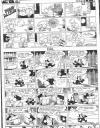 Â Felix, in the strips from 9-23 to 9-29-1935, paddles out to the ship from the Ape’s Island, and dons the Idol’s clay shell to disguise himself as he stows away. In the Sunday page, Felix helps a comic artist get a job as he sprays the comics editor with laughing gas from the Professor’s lab. The Nitrous Oxide induced guffaws land the cartoonist a job. Felix always looks out for the little guy.
 Felix, in the strips from 9-23 to 9-29-1935, paddles out to the ship from the Ape’s Island, and dons the Idol’s clay shell to disguise himself as he stows away. In the Sunday page, Felix helps a comic artist get a job as he sprays the comics editor with laughing gas from the Professor’s lab. The Nitrous Oxide induced guffaws land the cartoonist a job. Felix always looks out for the little guy.
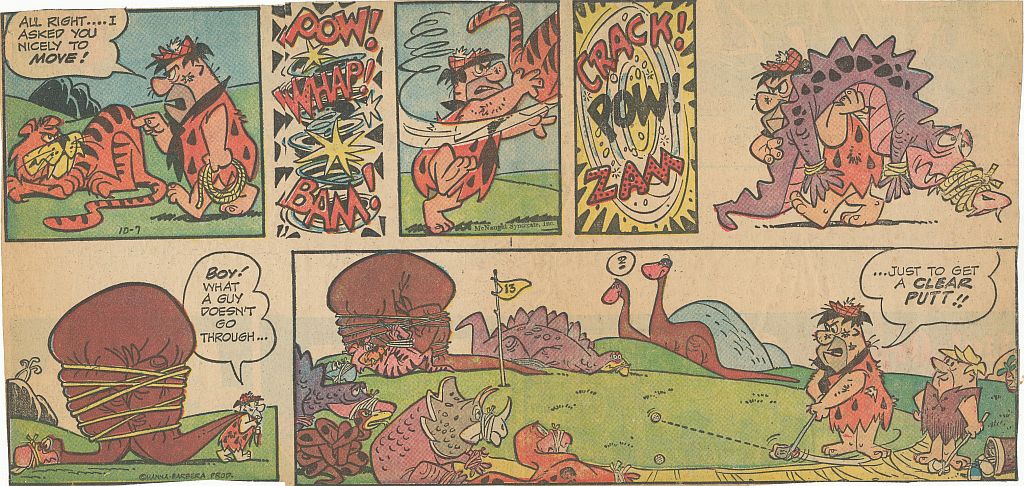


 Â To help Yowp out, we present third page versions of “The Flintstones” Sunday pages from Oct. 1962 in color. According to Mark Christiansen who commented before, these are the work of Dick Bickenbach, ace layout man, animator, and Joe Barbera’s right hand man in the MGM days. If you visit Yowp’s blog, you can see the top tier of these strips and read his comments on them. These were all snipped from the St. Louis Globe-Democrat in the days when “The Flintheads”, as my Dad called them, were fresh and new.
 To help Yowp out, we present third page versions of “The Flintstones” Sunday pages from Oct. 1962 in color. According to Mark Christiansen who commented before, these are the work of Dick Bickenbach, ace layout man, animator, and Joe Barbera’s right hand man in the MGM days. If you visit Yowp’s blog, you can see the top tier of these strips and read his comments on them. These were all snipped from the St. Louis Globe-Democrat in the days when “The Flintheads”, as my Dad called them, were fresh and new.
   It’s good to be posting again, sorry for the long hiatus, but after our trip to San Luis Obisbo and driving more than 800 miles, I just didn’t feel like concentrating on the weblog the way I should. More to come, pretty soon readers! Remember to click on the thumbnails to blow them up, this is especially important to read Duane’s letters.
So Long For Awhile (’til Oct. 14th)


 Â We won’t be around for a couple of weeks, so to tide you over, we risk enraging Yowp by posting the Oct. 1962 Yogi Sundays a little early. I’ve included a scan of the original art for the Oct. 7th episode, drawn by Harvey Eisenberg. It’s a bit choppy, because the original was so huge that I could only scan it in little pieces, then assemble it like a puzzle. Harvey did the art for the entire month’s worth of strips.
 We won’t be around for a couple of weeks, so to tide you over, we risk enraging Yowp by posting the Oct. 1962 Yogi Sundays a little early. I’ve included a scan of the original art for the Oct. 7th episode, drawn by Harvey Eisenberg. It’s a bit choppy, because the original was so huge that I could only scan it in little pieces, then assemble it like a puzzle. Harvey did the art for the entire month’s worth of strips.
 Â Myrtle, from 4-21-47 to 4-26-47, I like Sampson kicking the radio in the 4-21 and all the references to neighbor Smaltz in the 4-25 and 4-26 strips. The little bird characters that Fisher drew so well make some appearances too. We’ll see you anon, I’ll be painting up the coast with my wife for awhile. ‘Til then, browse the archives and copy your favorite strips.
 Myrtle, from 4-21-47 to 4-26-47, I like Sampson kicking the radio in the 4-21 and all the references to neighbor Smaltz in the 4-25 and 4-26 strips. The little bird characters that Fisher drew so well make some appearances too. We’ll see you anon, I’ll be painting up the coast with my wife for awhile. ‘Til then, browse the archives and copy your favorite strips.
Junior Times in January 1927 Pt. Two









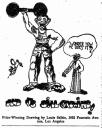


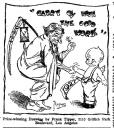
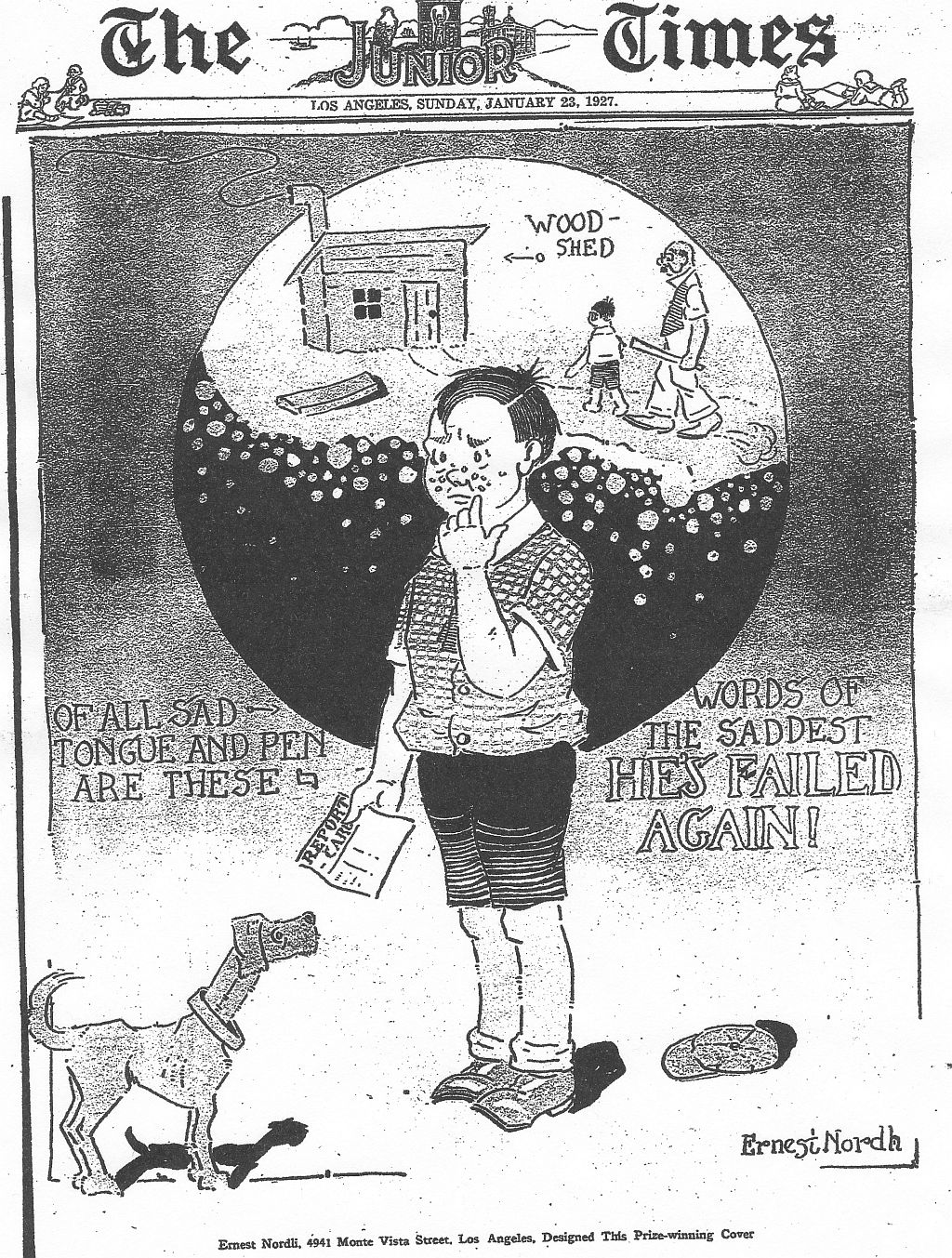
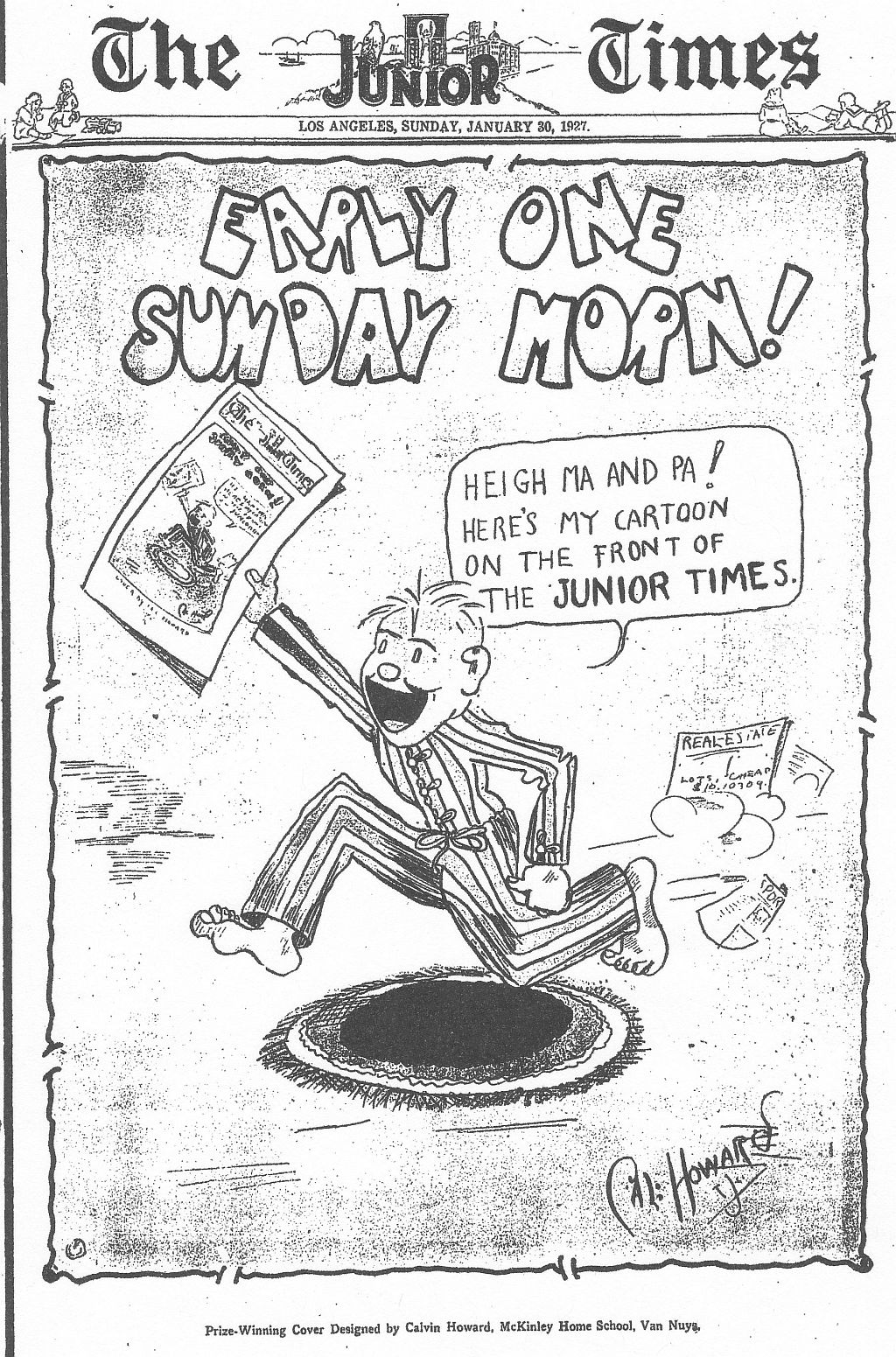 Â Here is part two of the January 16th, 23rd and 30th 1927 issues of the Junior Times. Alex Perez leads off with his cartoon about a meeting of the Times Junior Club. He shows a meeting between Aunt Dolly and Bob Wickersham (she calls him “Wicky”), and Manuel Moreno, Secretary of the Club, Â is caricatured. There’s also a photo up there of “Wick”, when he was running for President of the T.J.C.. There are new episodes of the comic strips “Hezy Tate” and “Pearl Handle” by Phil De Lara, “Jim Dandy” by Morey Reden, “Fishy Tales” by I. Ellis and “Tiny Brains” by Louie (Leo) Salkin. You’ll see a new year’s drawing by Frank Tipper in which 1927 is a ringer for a kewpie doll. As a coda, don’t miss the 10 dollar prize covers by Ernest (Ernie) Nordli and Cal Howard! Note that Cal has created an “infinity” cover. Â All these artists didn’t know it in 1927, but they were about to enter the animated cartoon profession, kicked off in 1928 by a new “talkie” cartoon featuring a musical mouse.
 Here is part two of the January 16th, 23rd and 30th 1927 issues of the Junior Times. Alex Perez leads off with his cartoon about a meeting of the Times Junior Club. He shows a meeting between Aunt Dolly and Bob Wickersham (she calls him “Wicky”), and Manuel Moreno, Secretary of the Club,  is caricatured. There’s also a photo up there of “Wick”, when he was running for President of the T.J.C.. There are new episodes of the comic strips “Hezy Tate” and “Pearl Handle” by Phil De Lara, “Jim Dandy” by Morey Reden, “Fishy Tales” by I. Ellis and “Tiny Brains” by Louie (Leo) Salkin. You’ll see a new year’s drawing by Frank Tipper in which 1927 is a ringer for a kewpie doll. As a coda, don’t miss the 10 dollar prize covers by Ernest (Ernie) Nordli and Cal Howard! Note that Cal has created an “infinity” cover.  All these artists didn’t know it in 1927, but they were about to enter the animated cartoon profession, kicked off in 1928 by a new “talkie” cartoon featuring a musical mouse.
Flintstones Sept. 1962 for Yowp



 Â In answer to Yowp’s post today, here are the third-page versions of the Flintstones Sunday comics from September of 1962. I was comic-cuttin’ crazy in that halcyon year, spending hours trimming strips out of the St. Louis Post-Dispatch and Globe-Democrat. In retrospect, my time would have been better spent in drawing my own cartoons! I couldn’t see ahead to this bloggin’ era we live in now, so all my strip cuttings have use now as visual backstops for other blogs. Make sure you click “Yowp” on the blogroll over to the right, and you will see the 1/2 page versions of these strips in black and white. Our family loved the Flintstones when they first aired in 1960. My Grandma Vera laughed at the way Fred WALKED! I have no idea who drew these particular pages, not Harvey Eisenberg anyway. I didn’t save as many of these pages as Yogi Bear, perhaps the Globe-Democrat dropped the strip after only a few years. You’ll find that most comic strips that were TV or radio centered only lasted about as long as the heyday of the show from which they were derived. I’m enjoying doing more posts, for now. Just click on the thumbnails to see them larger.
 In answer to Yowp’s post today, here are the third-page versions of the Flintstones Sunday comics from September of 1962. I was comic-cuttin’ crazy in that halcyon year, spending hours trimming strips out of the St. Louis Post-Dispatch and Globe-Democrat. In retrospect, my time would have been better spent in drawing my own cartoons! I couldn’t see ahead to this bloggin’ era we live in now, so all my strip cuttings have use now as visual backstops for other blogs. Make sure you click “Yowp” on the blogroll over to the right, and you will see the 1/2 page versions of these strips in black and white. Our family loved the Flintstones when they first aired in 1960. My Grandma Vera laughed at the way Fred WALKED! I have no idea who drew these particular pages, not Harvey Eisenberg anyway. I didn’t save as many of these pages as Yogi Bear, perhaps the Globe-Democrat dropped the strip after only a few years. You’ll find that most comic strips that were TV or radio centered only lasted about as long as the heyday of the show from which they were derived. I’m enjoying doing more posts, for now. Just click on the thumbnails to see them larger.
L.A. Junior Times Jan. 1927 Part One





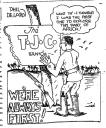



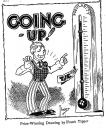  The blog strikes again with more cartoons from the kid cartoonists of the Los Angeles Junior Times! This time we have the goods from Jan. 2nd and 9th, 1927. The lead-off spot is given over to Isadore Ellis, who was one of the great Looney Tunes animators. He was paid 10 silver dollars for this cover of three funny cats singing about a dog who didn’t belong to the T.J.C. We have Ellis’ “Dunk Dank”, a Bob Wickersham “Fido Bark” and a Phil De Lara “Hezy Tate” episode from Jan. 2, 1927. The Times liked “Fido Bark” so much that they ran two of him in the Jan. 2nd issue. We also feature a Wick “Happy New Year” drawing, three “Pearl Handle” panels, another “Hezy Tate” strip (Jan. 9th), and a T.J.C. booster drawing, all by Phil De Lara. There’s also a “Highshine Joe” and a grocery store gag by Morris Redensky (Reden), a Lee Morehouse “Macy” strip and another T.J.C. promo drawing by animation pioneer Frank Tipper. Remember to click on the thumbnail images to see them larger.
 The blog strikes again with more cartoons from the kid cartoonists of the Los Angeles Junior Times! This time we have the goods from Jan. 2nd and 9th, 1927. The lead-off spot is given over to Isadore Ellis, who was one of the great Looney Tunes animators. He was paid 10 silver dollars for this cover of three funny cats singing about a dog who didn’t belong to the T.J.C. We have Ellis’ “Dunk Dank”, a Bob Wickersham “Fido Bark” and a Phil De Lara “Hezy Tate” episode from Jan. 2, 1927. The Times liked “Fido Bark” so much that they ran two of him in the Jan. 2nd issue. We also feature a Wick “Happy New Year” drawing, three “Pearl Handle” panels, another “Hezy Tate” strip (Jan. 9th), and a T.J.C. booster drawing, all by Phil De Lara. There’s also a “Highshine Joe” and a grocery store gag by Morris Redensky (Reden), a Lee Morehouse “Macy” strip and another T.J.C. promo drawing by animation pioneer Frank Tipper. Remember to click on the thumbnail images to see them larger.
Coming soon, Part TWO of the kid cartoonists’ output from Jan. 1927. They wore out a few Estabrooks that month. As I said in previous posts, 1926 and 1927 were the prime years in the Junior Times for amateur-turning-pro cartoonists. In 1928 there were fewer cartoons published, and in 1929, the fashion turned to puzzles and “find the hidden Chinese fishermen” type drawings. Keep reading and commenting, folks, and I’ll try to post more often.
Felix and Krazy Purr Again
![]()




 Â The blog is back with cats! Krazy (7-28 to 8-2-1941) is rife with bricks and Ignatz gags. I especially like the 7-30 strip, Ignatz is leaving the house and warns Krazy to “don’t let the candle go out.” Krazy promptly locks the door and the candle stays in!
 The blog is back with cats! Krazy (7-28 to 8-2-1941) is rife with bricks and Ignatz gags. I especially like the 7-30 strip, Ignatz is leaving the house and warns Krazy to “don’t let the candle go out.” Krazy promptly locks the door and the candle stays in!
![]()





  Felix (9-16 to 9-22-1935) has the sailors constantly changing their opinion of Felix from jinx to good luck charm, since he found an ancient hollow idol in the underground city. The idol has a curse on it and seems to cause a volcano to erupt in a beautifully rendered panel in the 9-19, and the frightened sailors high tail it back to the ship, leaving poor Felix to paddle his way out of there in the hollow idol. The idol becomes quite a prop in the strips to come, don’t miss ’em! In the Sunday, Felix continues to stay at the professor’s house and get injections to make him think he’s had a chicken dinner. Felix finds a fluid to make him invisible and get past the professor to some real chicken, but the Prof. feeds a mouse with “Powite” solution and Felix is punched to pieces.
 Felix (9-16 to 9-22-1935) has the sailors constantly changing their opinion of Felix from jinx to good luck charm, since he found an ancient hollow idol in the underground city. The idol has a curse on it and seems to cause a volcano to erupt in a beautifully rendered panel in the 9-19, and the frightened sailors high tail it back to the ship, leaving poor Felix to paddle his way out of there in the hollow idol. The idol becomes quite a prop in the strips to come, don’t miss ’em! In the Sunday, Felix continues to stay at the professor’s house and get injections to make him think he’s had a chicken dinner. Felix finds a fluid to make him invisible and get past the professor to some real chicken, but the Prof. feeds a mouse with “Powite” solution and Felix is punched to pieces.
    I’m playing catch-up with the blog now that it’s back up, and soon I’ll do another “Junior Times” post (they are the hardest to do). Until then, thanks everyone for being so patient and continuing to read the Catblog.
It’s Great to Be Bloggin’ Again!
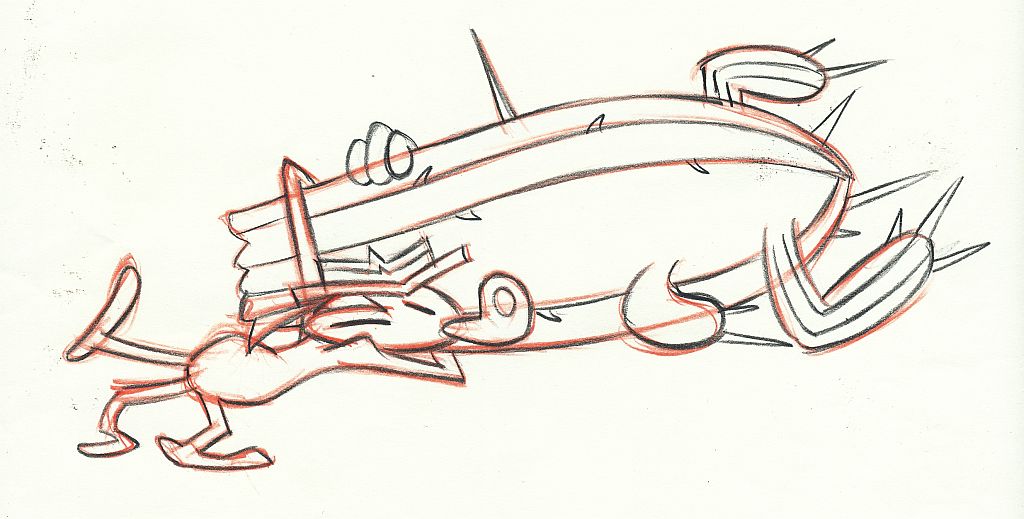 Â The Blog froze up about August 28th. A lot of “Deprecated” messages appeared on the top of the page and I couldn’t figure out how to get them off. The entire site was frozen, and I couldn’t access any of the controls, post or edit comments. I appealed to many people for help, and many tried, thanks Adrian, Charles and Thad! Greg Ford, as usual, was the biggest help. He remembered that our web host is GoDaddy.com. The kind people at GoDaddy were able to talk me through the reset process for WordPress, on which this blog is written. Seems I have an old version (5 years old) of WordPress which wasn’t syncing up with newer Plugins and fonts. Now I’ve been updated to Vers. 2.1.3, and you will notice that the masthead and type font is just a little different. I only have two Plugins on the site, both of which are not activated. Whew! The things you have to know just to run a blog! Thanks again kind friends, for putting up with my extreme ignorance regarding the fine points of Plugins and Vers. 2.1.3!
 The Blog froze up about August 28th. A lot of “Deprecated” messages appeared on the top of the page and I couldn’t figure out how to get them off. The entire site was frozen, and I couldn’t access any of the controls, post or edit comments. I appealed to many people for help, and many tried, thanks Adrian, Charles and Thad! Greg Ford, as usual, was the biggest help. He remembered that our web host is GoDaddy.com. The kind people at GoDaddy were able to talk me through the reset process for WordPress, on which this blog is written. Seems I have an old version (5 years old) of WordPress which wasn’t syncing up with newer Plugins and fonts. Now I’ve been updated to Vers. 2.1.3, and you will notice that the masthead and type font is just a little different. I only have two Plugins on the site, both of which are not activated. Whew! The things you have to know just to run a blog! Thanks again kind friends, for putting up with my extreme ignorance regarding the fine points of Plugins and Vers. 2.1.3!
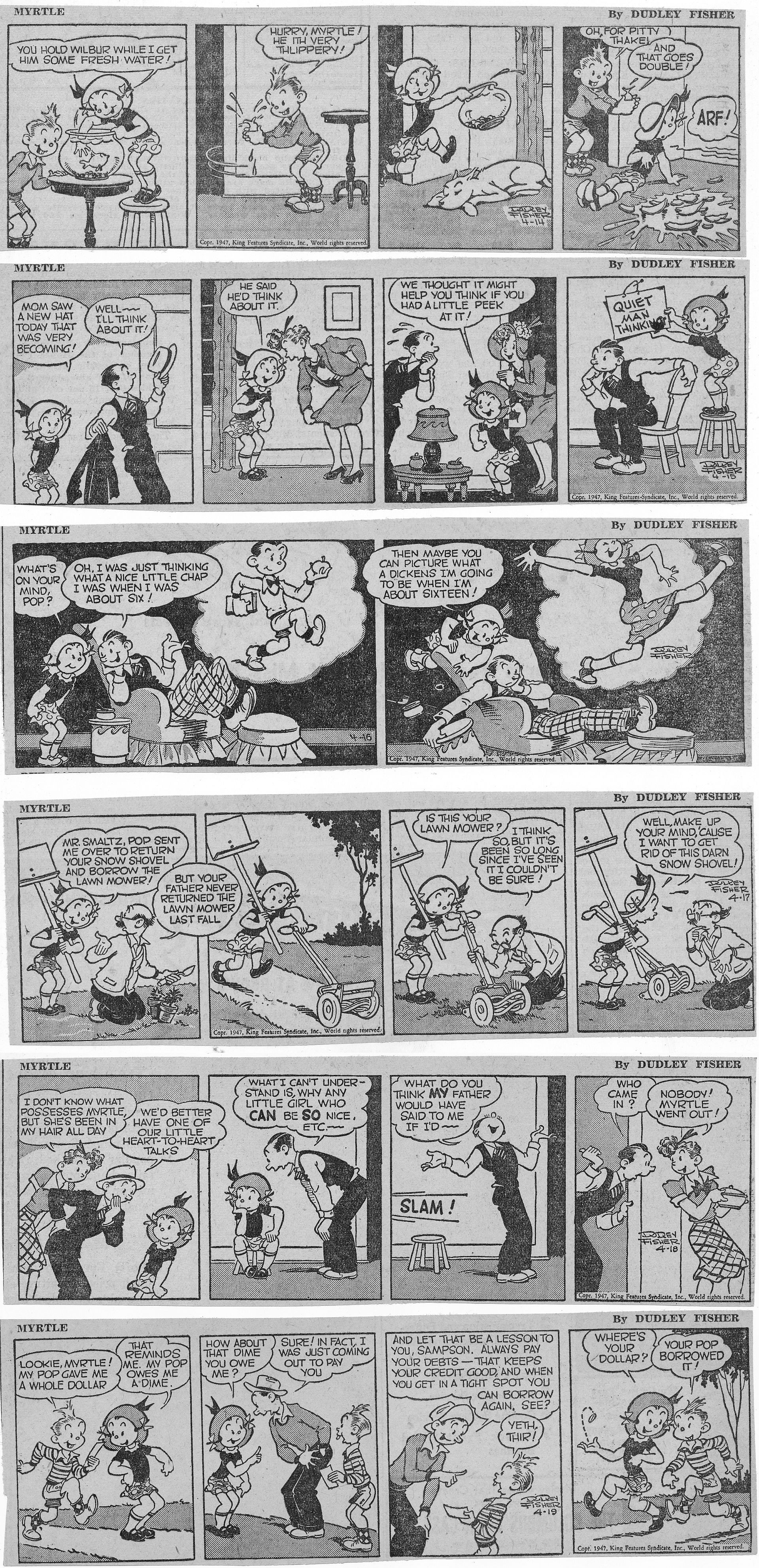 Â I’m not going to do the full quota of comics this time, I’ve been off the blog for so long that I’m going to sashay into it kinda gentle-like. Here’s Myrtle from 4-14 to 4-19-1947 by the great Dudley Fisher. My favorite from the week’s batch is the 4-16, which contains a special preview of “what a Dickens” Myrtle will be like when she’s 16! She has a figure, but even better is the stretched-out pose that Fisher uses to show her energetic attitude.
 I’m not going to do the full quota of comics this time, I’ve been off the blog for so long that I’m going to sashay into it kinda gentle-like. Here’s Myrtle from 4-14 to 4-19-1947 by the great Dudley Fisher. My favorite from the week’s batch is the 4-16, which contains a special preview of “what a Dickens” Myrtle will be like when she’s 16! She has a figure, but even better is the stretched-out pose that Fisher uses to show her energetic attitude.




 Â I felt very unhappy that I couldn’t post the Sept. 1962 Yogi Bear Sunday pages due to the blog freeze. Here they are at last, in response to Yowp’s post of Sept. 2nd. They all seem to be by Harvey Eisenberg this time. The 9-30 strip is rather poignant, as President John F. Kennedy would be shot down Nov. 22, 1963, a little more than a year after this strip was published. Caroline Kennedy, who is the little girl in the last panel of the 9-30 Yogi page, Â is still around, is a political presence, and a supporter and severe critic of President Obama. Please click the blogroll to the right of the page, to go to Yowp’s website and read his comments on these strips.
 I felt very unhappy that I couldn’t post the Sept. 1962 Yogi Bear Sunday pages due to the blog freeze. Here they are at last, in response to Yowp’s post of Sept. 2nd. They all seem to be by Harvey Eisenberg this time. The 9-30 strip is rather poignant, as President John F. Kennedy would be shot down Nov. 22, 1963, a little more than a year after this strip was published. Caroline Kennedy, who is the little girl in the last panel of the 9-30 Yogi page,  is still around, is a political presence, and a supporter and severe critic of President Obama. Please click the blogroll to the right of the page, to go to Yowp’s website and read his comments on these strips.
    I’ve missed, and haven’t missed writing this blog these past few weeks. It can be a time-consuming task to put this little squeak together. Some nice readers wrote to me and said they would miss this electronic rag if I quit doing it, so for them I’ll continue as long as the software lets me! I’ll try to get some more of my favorite (and yours) Felix, Krazy and L.A. Junior Times comics back here (where they belong) very soon. Computers can still be very formidable critters to deal with at times, especially when you can’t figure out what “Deprecated warnings” mean, let alone “Codex”. Good luck with your blogs, you content providers! See you soon.
Adios Barker Bill
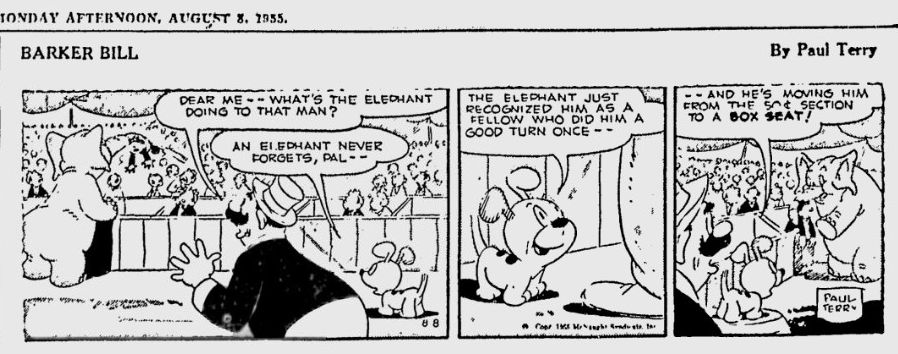









  Well Folks, here are the last three weeks of Barker Bill strips available to me, from 8-8-55 to 8-25-55. If you find more of them, please write to me, I still don’t know the actual end date of the strip. These are all gag-a-day circus strips. The gag in the 8-24 was used by Stan Laurel for a phonograph record that he made with Oliver Hardy on their trip to England in the 1930s! Since it takes me quite a long time to get all the Jr. Times material on here, I won’t be replacing Barker Bill with another strip.
 Well Folks, here are the last three weeks of Barker Bill strips available to me, from 8-8-55 to 8-25-55. If you find more of them, please write to me, I still don’t know the actual end date of the strip. These are all gag-a-day circus strips. The gag in the 8-24 was used by Stan Laurel for a phonograph record that he made with Oliver Hardy on their trip to England in the 1930s! Since it takes me quite a long time to get all the Jr. Times material on here, I won’t be replacing Barker Bill with another strip.
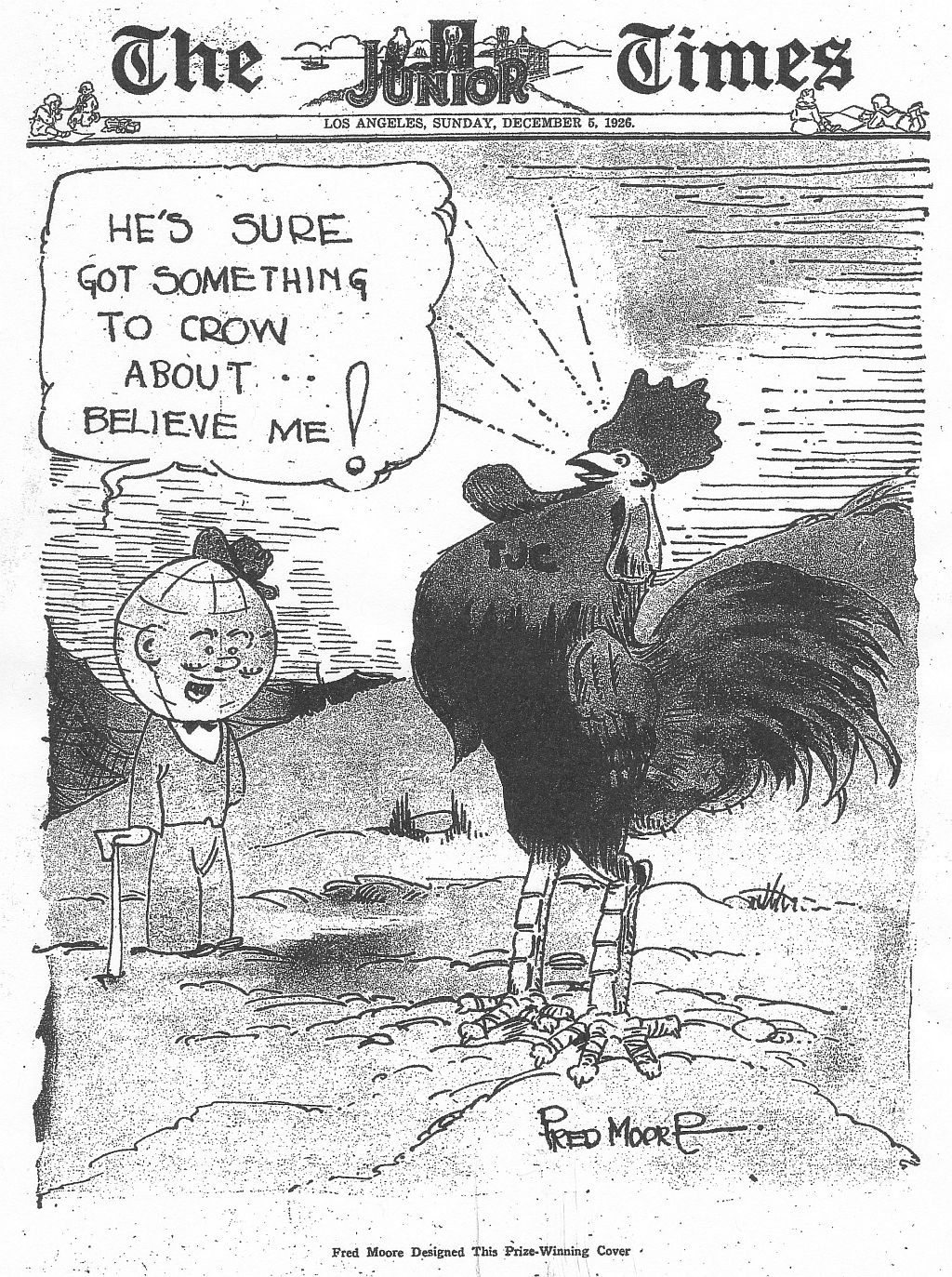








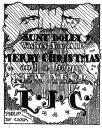





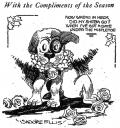
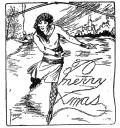
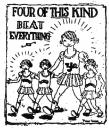

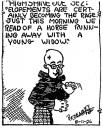



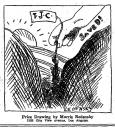







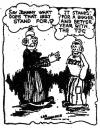 Â The L.A. Junior Times for Dec. 1926 burst forth with a comicopia of material from Fred Moore (rooster cover), Phil De Lara, with his cover, Pearl Handle panel and Hezy Tate strip. Note in his bio from 3-11-28, that his ambition was to become an editorial newspaper cartoonist (animation wasn’t on his radar yet), he was 14 years old in 1926 when he did all these cartoons for Aunt Dolly. You’ll see some episodes of “Dunk Dank” by I. Ellis, a Morris Redensky (Morey Reden) portfolio with episodes of “Hank’s Hash House”, “High Shine Joe”, “The Snickle Bros.” and many more drawings he made to promote the T.J.C. There are also three “Lucky Lem” strips by Bill Zaboly, a “Fido Bark” by Bob Wickersham and a T.J.C. promo drawing by Lee Morehouse. To enjoy all this work by future animation and comic strip greats, just click on the thumbnails. 1926 and early 1927 were the high points for the Junior Times for kid cartoonists. The Times published a great deal of their work, with several pages per week, loaded with amateur comic strips. The Junior Times cut back on the cartoons as 1928 chugged along, featuring more games and puzzles for the “juniors”, as we will see later on.
 The L.A. Junior Times for Dec. 1926 burst forth with a comicopia of material from Fred Moore (rooster cover), Phil De Lara, with his cover, Pearl Handle panel and Hezy Tate strip. Note in his bio from 3-11-28, that his ambition was to become an editorial newspaper cartoonist (animation wasn’t on his radar yet), he was 14 years old in 1926 when he did all these cartoons for Aunt Dolly. You’ll see some episodes of “Dunk Dank” by I. Ellis, a Morris Redensky (Morey Reden) portfolio with episodes of “Hank’s Hash House”, “High Shine Joe”, “The Snickle Bros.” and many more drawings he made to promote the T.J.C. There are also three “Lucky Lem” strips by Bill Zaboly, a “Fido Bark” by Bob Wickersham and a T.J.C. promo drawing by Lee Morehouse. To enjoy all this work by future animation and comic strip greats, just click on the thumbnails. 1926 and early 1927 were the high points for the Junior Times for kid cartoonists. The Times published a great deal of their work, with several pages per week, loaded with amateur comic strips. The Junior Times cut back on the cartoons as 1928 chugged along, featuring more games and puzzles for the “juniors”, as we will see later on.





 Â From 7-21 to 7-26-1941, Ignatz mostly takes to the air to bombard Krazy with bricks as he parachutes down. I like Offissa Pupp’s flying club in the 7-25. I don’t quite understand what Ignatz is using to hold down a brick evidently filled with helium gas in the 7-24. Is it a wad of gum, or a rock? Offissa Pupp knocks it off the brick, and the brick becomes a “billoom”.
 From 7-21 to 7-26-1941, Ignatz mostly takes to the air to bombard Krazy with bricks as he parachutes down. I like Offissa Pupp’s flying club in the 7-25. I don’t quite understand what Ignatz is using to hold down a brick evidently filled with helium gas in the 7-24. Is it a wad of gum, or a rock? Offissa Pupp knocks it off the brick, and the brick becomes a “billoom”.






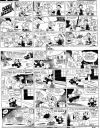 Â Felix, from 9-9 to 9-14-1935 finds him waiting for rescue in the underground city. The sailors decide that Felix is “a pest and a nuisance” in the 9-9, and Felix stays underground to escape their wrath (everybody has such short memories in Messmer’s world). Felix discovers a one-eyed idol in the tunnels and uses it as a disguise, it comes in handy, as you shall soon see. The Sunday has Felix swearing off dreaming, as he tries to get adopted by an old professor who has invented an “energy drink” called Zowite. At first the Prof is hostile to Felix invading his home, but when Felix drinks some of the Zowite, thinking it is milk, he becomes quite powerful and beats up the Prof. The Prof decides to keep Felix around as an experimental cat!
 Felix, from 9-9 to 9-14-1935 finds him waiting for rescue in the underground city. The sailors decide that Felix is “a pest and a nuisance” in the 9-9, and Felix stays underground to escape their wrath (everybody has such short memories in Messmer’s world). Felix discovers a one-eyed idol in the tunnels and uses it as a disguise, it comes in handy, as you shall soon see. The Sunday has Felix swearing off dreaming, as he tries to get adopted by an old professor who has invented an “energy drink” called Zowite. At first the Prof is hostile to Felix invading his home, but when Felix drinks some of the Zowite, thinking it is milk, he becomes quite powerful and beats up the Prof. The Prof decides to keep Felix around as an experimental cat!
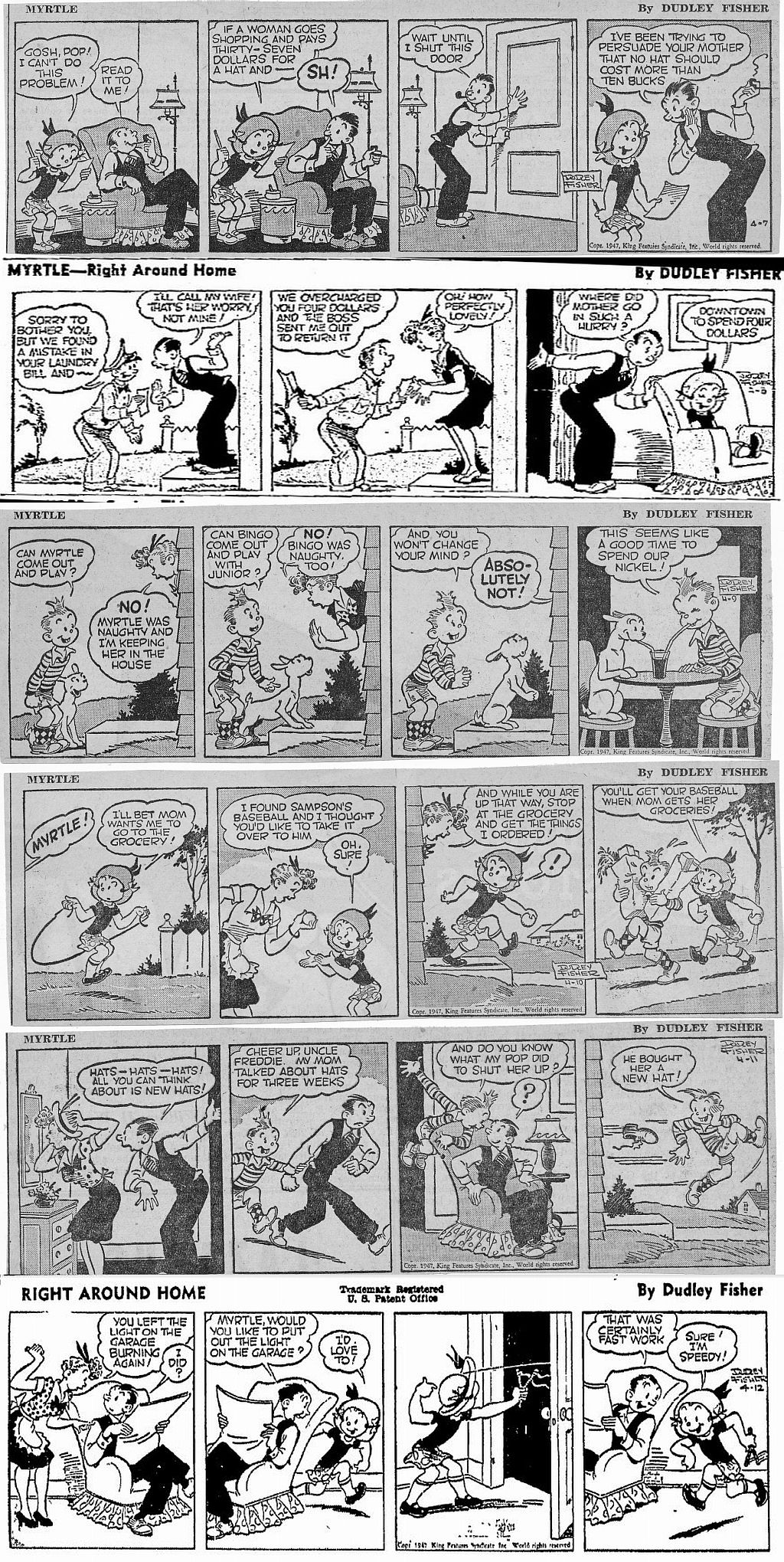  Here is Myrtle from 4-7 to 4-12-1947. I love Sampson’s poses in the 4-11, as he hangs off the back of Uncle Freddie’s chair, and makes a hasty exit in the last panel, followed by his Uncle’s shoe. I like Myrtle’s attitude in the 4-12 as she nonchalantly shoots out the garage light with her slingshot. Fred commends her on her “fast work”, to which she saucily remarks, “I’m speedy!”
 Here is Myrtle from 4-7 to 4-12-1947. I love Sampson’s poses in the 4-11, as he hangs off the back of Uncle Freddie’s chair, and makes a hasty exit in the last panel, followed by his Uncle’s shoe. I like Myrtle’s attitude in the 4-12 as she nonchalantly shoots out the garage light with her slingshot. Fred commends her on her “fast work”, to which she saucily remarks, “I’m speedy!”

  Here’s “The Flintstones” Sunday pages from 8-12 and 8-26-1962. These are the earliest examples of the strip that I have, and I’m using them here to augment Yowp’s recent post on “Flintstone Weekend Comics”. Just click the link over on the Blogroll to read Yowp’s account of this month’s strips. The 8-12 is the only half-page episode I have. I think Yowp credits Gene Hazelton with the art, Barney looks a lot like he does in the “Swimming Pool” episode. The other Flintstones strips I have are thirds like the 8-26, but I’ll help Yowp as much as I can. He gives good blog. It should be a tad simpler to do posts without Barker Bill, so maybe I’ll squeeze in another one soon. Make sure you go over to the Facebook page, www.facebook.com/someothercat to see some of the credit title designs and the original storyboard for the Cat’s latest cartoon. It may be one of the very last cel-animated cartoons produced in the USA on 35mm film!
 Here’s “The Flintstones” Sunday pages from 8-12 and 8-26-1962. These are the earliest examples of the strip that I have, and I’m using them here to augment Yowp’s recent post on “Flintstone Weekend Comics”. Just click the link over on the Blogroll to read Yowp’s account of this month’s strips. The 8-12 is the only half-page episode I have. I think Yowp credits Gene Hazelton with the art, Barney looks a lot like he does in the “Swimming Pool” episode. The other Flintstones strips I have are thirds like the 8-26, but I’ll help Yowp as much as I can. He gives good blog. It should be a tad simpler to do posts without Barker Bill, so maybe I’ll squeeze in another one soon. Make sure you go over to the Facebook page, www.facebook.com/someothercat to see some of the credit title designs and the original storyboard for the Cat’s latest cartoon. It may be one of the very last cel-animated cartoons produced in the USA on 35mm film!
Stripz Again






 Â Back to the strips, yet again! Here are the next two weeks worth of Barker Bills, 7-25 to 8-4-1955. According to Allan Holtz’s new book on American Comic Strips, there is no ending date for the feature except sometime in 1955. We still have a few more to post. Spot gags continue, featuring Phyllis the strong lady, Little May, Peanuts Perkins, the India Rubber Man and all your favorites!
 Back to the strips, yet again! Here are the next two weeks worth of Barker Bills, 7-25 to 8-4-1955. According to Allan Holtz’s new book on American Comic Strips, there is no ending date for the feature except sometime in 1955. We still have a few more to post. Spot gags continue, featuring Phyllis the strong lady, Little May, Peanuts Perkins, the India Rubber Man and all your favorites!






 Â Felix keeps on walking, from 9-2 to 9-8-1935. Felix and Danny are trapped undergound in the Ancient City all week, and have a surprise encounter with a ground mole in the 9-5. Felix’s adventures in Dreamland finally come to an end in the 9-8 Sunday page. A hobo sets fire to him and wakes Felix from a nightmare. It seems he was going to be ignited in the tobacco for the Giant’s pipe. This is almost the exact situation that Mickey Mouse encountered in “Giantland” Nov. 25th, 1933.
 Felix keeps on walking, from 9-2 to 9-8-1935. Felix and Danny are trapped undergound in the Ancient City all week, and have a surprise encounter with a ground mole in the 9-5. Felix’s adventures in Dreamland finally come to an end in the 9-8 Sunday page. A hobo sets fire to him and wakes Felix from a nightmare. It seems he was going to be ignited in the tobacco for the Giant’s pipe. This is almost the exact situation that Mickey Mouse encountered in “Giantland” Nov. 25th, 1933.





 Â Here’s the Kat from 7-14 to 7-19-1941, the theme is “On Vacation”. At first Krazy is singing and pining away, then he decides to visit a “Heppy Lend Fur Fur Away” and takes Ignatz with him, at the suggestion of Mrs. Kwakk-Wakk. Offissa Pupp follows in the 7-19 with his portable jail. The 7-18 strip has some juicy architecture in it, Herriman style. I love Mrs. Kwakk-Wakk apparently walking right THROUGH a wall in the last panel, leaving an amazed Pupp on the other side.
 Here’s the Kat from 7-14 to 7-19-1941, the theme is “On Vacation”. At first Krazy is singing and pining away, then he decides to visit a “Heppy Lend Fur Fur Away” and takes Ignatz with him, at the suggestion of Mrs. Kwakk-Wakk. Offissa Pupp follows in the 7-19 with his portable jail. The 7-18 strip has some juicy architecture in it, Herriman style. I love Mrs. Kwakk-Wakk apparently walking right THROUGH a wall in the last panel, leaving an amazed Pupp on the other side.






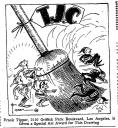


  From the L.A. Junior Times in November, 1926 we present a cross-section of strips and artwork from the soon-to-be-greats. A cover and a Fido Bark strip by Bob Wickersham, a strip by Fred Moore, three “Dunk Danks” and a drawing by Izzy Ellis, three “Lucky Lem” strips and two drawings by Bill Zaboly,  “Macy and Hank” by Lee Morehouse (future Donald Duck animator), two “Hezy Tates” and a “Pearl Handle” drawn by Phil De Lara, together with a photograph of him, an “Average Home” strip and a drawing by Frank Tipper, a Thanksgiving cover by Henry Formhals, who later in the 1930s was a key assistant to Merrill Blosser who did “Freckles and His Friends”. Formhals also took over the art on “Joe Jinks” in the 1930s.  We also have an episode of the “Snickle Bros.” by Morris Redensky. He later shortened his name to Morey Reden and animated and drew comic books in New York and Los Angeles, working for Disney (Pluto’s Playmate, Canine Caddy),Famous (Pop-Pie A La Mode, Lulu’s Birthday Party), Screen Gems (The Schooner the Better, Pickled Puss) and other cartoon studios, ending with “The Grinch Grinches the Cat In The Hat” for Marvel Prods.
 From the L.A. Junior Times in November, 1926 we present a cross-section of strips and artwork from the soon-to-be-greats. A cover and a Fido Bark strip by Bob Wickersham, a strip by Fred Moore, three “Dunk Danks” and a drawing by Izzy Ellis, three “Lucky Lem” strips and two drawings by Bill Zaboly,  “Macy and Hank” by Lee Morehouse (future Donald Duck animator), two “Hezy Tates” and a “Pearl Handle” drawn by Phil De Lara, together with a photograph of him, an “Average Home” strip and a drawing by Frank Tipper, a Thanksgiving cover by Henry Formhals, who later in the 1930s was a key assistant to Merrill Blosser who did “Freckles and His Friends”. Formhals also took over the art on “Joe Jinks” in the 1930s.  We also have an episode of the “Snickle Bros.” by Morris Redensky. He later shortened his name to Morey Reden and animated and drew comic books in New York and Los Angeles, working for Disney (Pluto’s Playmate, Canine Caddy),Famous (Pop-Pie A La Mode, Lulu’s Birthday Party), Screen Gems (The Schooner the Better, Pickled Puss) and other cartoon studios, ending with “The Grinch Grinches the Cat In The Hat” for Marvel Prods.
 Â Here is Myrtle from 3-31 to 4-5-1947. I like Papa dressing up like a girl in the 3-31 and then getting a kiss from the milkman. That’s a great pose in the last panel as Papa contorts himself at the kitchen sink to wash his mouth out. I also like the spelling word that Papa springs on Myrtle in the 4-5, Dudley Fisher had a good range of intelligence to his gags.
 Here is Myrtle from 3-31 to 4-5-1947. I like Papa dressing up like a girl in the 3-31 and then getting a kiss from the milkman. That’s a great pose in the last panel as Papa contorts himself at the kitchen sink to wash his mouth out. I also like the spelling word that Papa springs on Myrtle in the 4-5, Dudley Fisher had a good range of intelligence to his gags.



 Â Here’s the August, 1962 Yogi Bear Sundays, all drawn by Harvey Eisenberg. I’ll bet that Yowp will like the all-star Hanna-Barbera cast on the teeter-totter in the 8-5. I like the intensity of Yogi’s bowling poses in the 8-26. Well, looks like I’ve beaten you to the dog dish this time, fella! Don’t you bare your teeth at me, be nice!
 Here’s the August, 1962 Yogi Bear Sundays, all drawn by Harvey Eisenberg. I’ll bet that Yowp will like the all-star Hanna-Barbera cast on the teeter-totter in the 8-5. I like the intensity of Yogi’s bowling poses in the 8-26. Well, looks like I’ve beaten you to the dog dish this time, fella! Don’t you bare your teeth at me, be nice!
Goodbye, Frank
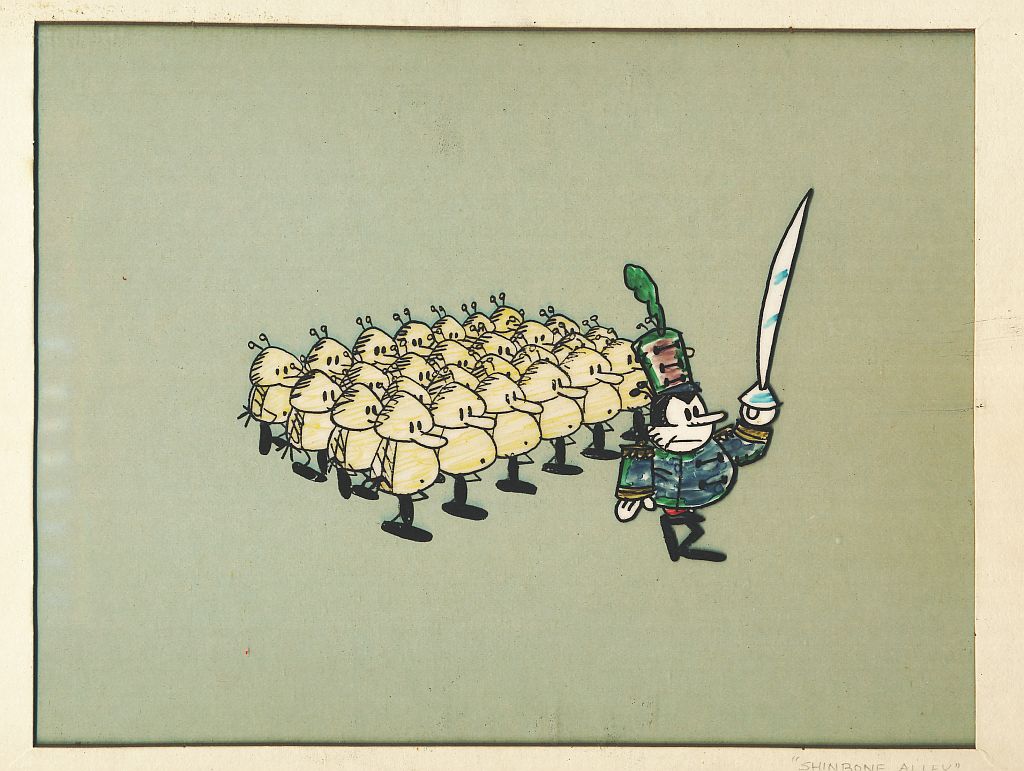 Â This is a cel from my first professional scene of animation. It was used in the “Archy Declares War” sequence from “Shinbone Alley”, which was made in the summer of 1969 at the Colorvision studios over on Sunset. Since then, Channel 28 and now the Church of Scientology have taken over the building. I’ll never forget the way the studio looked like then, we were in a little ramshackle bungalow across from the main lot with the sound stages that had been the Monogram studio in the dim distant past. They actually were shooting soft-core porn features on those stages in 1969. Several of us young bumpkins looked in on the deserted stages during our lunch hour and saw whips, chains and manacles attached to the walls. We wondered what in the heck could they be shooting in there? We got a big clue when a covy of heavily made-up ladies paraded past our bungalow one day, heading for the sound stages. The animator I was assigned to, Frank Andrina, took great amusement at our reactions, chuckling softly to himself. Frank was keying a lot of his extremes in Pentel pen, and I was expected to mimic his line on the inbetweens:
 This is a cel from my first professional scene of animation. It was used in the “Archy Declares War” sequence from “Shinbone Alley”, which was made in the summer of 1969 at the Colorvision studios over on Sunset. Since then, Channel 28 and now the Church of Scientology have taken over the building. I’ll never forget the way the studio looked like then, we were in a little ramshackle bungalow across from the main lot with the sound stages that had been the Monogram studio in the dim distant past. They actually were shooting soft-core porn features on those stages in 1969. Several of us young bumpkins looked in on the deserted stages during our lunch hour and saw whips, chains and manacles attached to the walls. We wondered what in the heck could they be shooting in there? We got a big clue when a covy of heavily made-up ladies paraded past our bungalow one day, heading for the sound stages. The animator I was assigned to, Frank Andrina, took great amusement at our reactions, chuckling softly to himself. Frank was keying a lot of his extremes in Pentel pen, and I was expected to mimic his line on the inbetweens: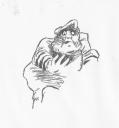
 Frank liked what I did with the Pentel lines, he was very complimentary about the drawings I made for him. On the basis of these drawings, and a lot of badgering from me, Frank gave me a couple of brief scenes in the “Archy Declares War” sequence for me to do. Sam Cornell was the key layout on this sequence:
Frank liked what I did with the Pentel lines, he was very complimentary about the drawings I made for him. On the basis of these drawings, and a lot of badgering from me, Frank gave me a couple of brief scenes in the “Archy Declares War” sequence for me to do. Sam Cornell was the key layout on this sequence:  You can see by the little doodles of Ignatz and Krazy Kat, that Sam was a Herriman fan. His layouts really had the spirit of Garge in them and inspired us all! Many of us on the production thought that the whole picture should have been in the Herriman style, but John Wilson, the director, leaned towards a more Disneyesque approach (though he would have been reluctant to admit it). Frank got the plumb assignment as key animator on the sequence, and we had a lot of fun with it. Of course, the animation had a sort of limited look to it, that was Frank’s training. He used to refer to full animation as “fool animation”, thinking it a waste of money. Frank animated at Hanna-Barbera and TV Spots a lot through the 1960s and his timing style, dialog:
You can see by the little doodles of Ignatz and Krazy Kat, that Sam was a Herriman fan. His layouts really had the spirit of Garge in them and inspired us all! Many of us on the production thought that the whole picture should have been in the Herriman style, but John Wilson, the director, leaned towards a more Disneyesque approach (though he would have been reluctant to admit it). Frank got the plumb assignment as key animator on the sequence, and we had a lot of fun with it. Of course, the animation had a sort of limited look to it, that was Frank’s training. He used to refer to full animation as “fool animation”, thinking it a waste of money. Frank animated at Hanna-Barbera and TV Spots a lot through the 1960s and his timing style, dialog:   and his way of breaking body parts up to separate cel levels all reflected the H-B thinking. Frank was an affable person, somewhat short in stature, smoked heavily in those days and had a stammering way of talking, especially with words beginning with “S”. He could also be extremely serious at times, and his voice could be very rich sounding and commanding (perhaps due to the cigarettes). He made me aware of Union issues and was one of the first animators to fully realize the devastating impact that runaway production was about to have on the cartoon industry. Even though John Wilson was signed with the Teamsters union, Frank talked me into attending some MPSC (Motion Picture Screen Cartoonists) meetings about a possible labor action to try to stop runaway before all our jobs went overseas or to Canada or Mexico. Jay Ward (Rocky and His Friends) and Bill Hanna ( The Funky Phantom) were among the first to take work out of the country, and companies like Rankin and Bass did all their animation in Japan. Thanks to Frank and some other concerned animators, the issue actually came to a strike vote in 1969. However, ink and paint artists outnumbered animators and assistants in those days, since I and P were the most labor intensive (and lowest paid) positions in the industry. Bill Hanna decided to throw a scare into the I and P ranks by selectively laying off these “girls” at unexpected times during the high production season that summer. The I and P artists were certainly shaken by these actions and chose to vote down the strike proposal. As it turned out, that was the best chance the MPSC had to stop the runaway train from leaving the USA station! When we missed that chance, as Frank often told me, we lost the industry.
 and his way of breaking body parts up to separate cel levels all reflected the H-B thinking. Frank was an affable person, somewhat short in stature, smoked heavily in those days and had a stammering way of talking, especially with words beginning with “S”. He could also be extremely serious at times, and his voice could be very rich sounding and commanding (perhaps due to the cigarettes). He made me aware of Union issues and was one of the first animators to fully realize the devastating impact that runaway production was about to have on the cartoon industry. Even though John Wilson was signed with the Teamsters union, Frank talked me into attending some MPSC (Motion Picture Screen Cartoonists) meetings about a possible labor action to try to stop runaway before all our jobs went overseas or to Canada or Mexico. Jay Ward (Rocky and His Friends) and Bill Hanna ( The Funky Phantom) were among the first to take work out of the country, and companies like Rankin and Bass did all their animation in Japan. Thanks to Frank and some other concerned animators, the issue actually came to a strike vote in 1969. However, ink and paint artists outnumbered animators and assistants in those days, since I and P were the most labor intensive (and lowest paid) positions in the industry. Bill Hanna decided to throw a scare into the I and P ranks by selectively laying off these “girls” at unexpected times during the high production season that summer. The I and P artists were certainly shaken by these actions and chose to vote down the strike proposal. As it turned out, that was the best chance the MPSC had to stop the runaway train from leaving the USA station! When we missed that chance, as Frank often told me, we lost the industry.
       Frank lived in the Hollywood Hills and was good friends with John Sparey, who I’ve done extensive posts about elsewhere on this blog. He collected arms and armor and had some really rare pieces dating back to the 16th century in Spain (some breastplates) and had some beautiful swords and muskets as I remember. He would occasionally bring these in to the studio to show them off. I remember the bosses being a little afraid of the swords. I think Frank was also adept at fencing, he really loved that era. Frank’s body English was a little like Peter Falk’s, very shy, a lot of internal gestures, stammering, but authoritative when he had to be. He was born in 1929 and started at the Ray Patin studio in 1954, he also worked at UPA and animated on the Linus the Lionhearted show for Ed Graham, and Calvin and the Colonel for TV Spots. It seemed Frank was always animating somewhere, even in his seventies he was picking up work here and there. I’ll never forget how elated he was at joining the Motion Picture Academy just a few years ago. He had always wanted to be a member, and at last was accepted. I saw him at a few of our animated short subject screenings. When he saw my cartoon, “It’s ‘The Cat'”, his only comment was, “Looks like your stuff, alright.” He followed that up with his patented little giggle. Gosh, I hate to see Frank leave us, passing on this year at the age of eighty-three. He was a really great pro cartoonist and beloved by his friends. In later years I saw him rarely, but will always remember how generous he was to give me those two scenes to animate. Frank not only started me off as an animator, but greatly enlarged my world with his forward thinking Union activity, and his knowledge of world history and just about every battle every waged all over the globe. Thanks, Pal! May you rest in peace. 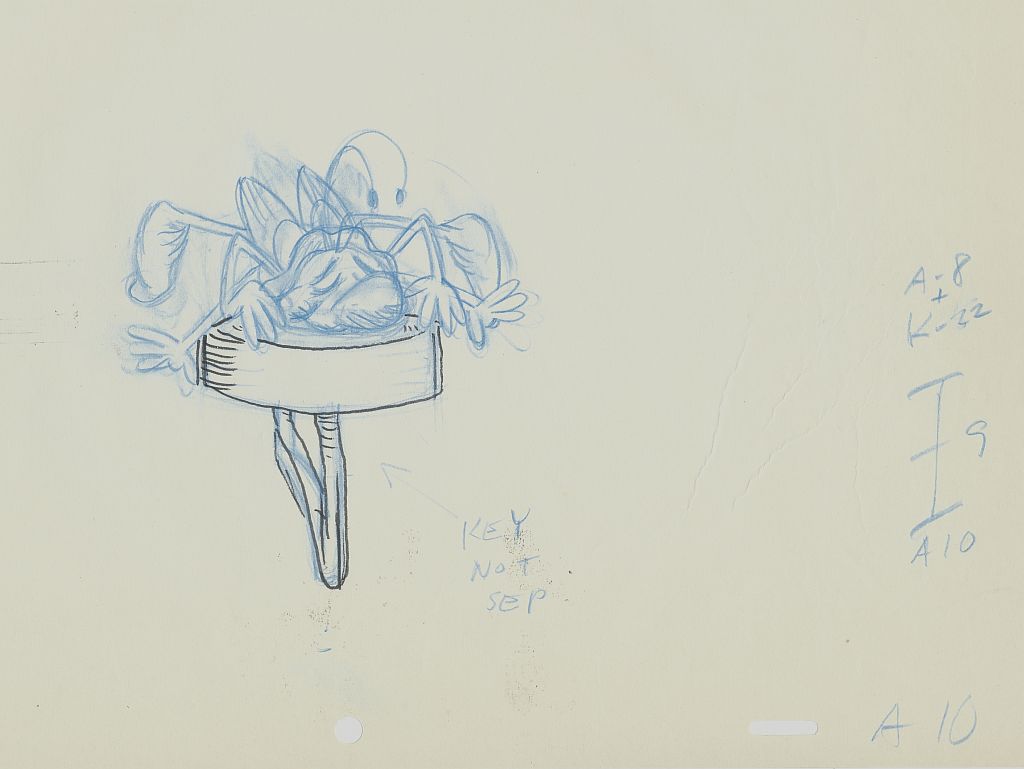  SHINNNBOHNNE ALLEEY! SHHINNNBOOOHOOONE ALLIEEE! (Imagine Allan Reed singing that.)
 SHINNNBOHNNE ALLEEY! SHHINNNBOOOHOOONE ALLIEEE! (Imagine Allan Reed singing that.)






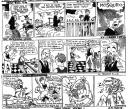







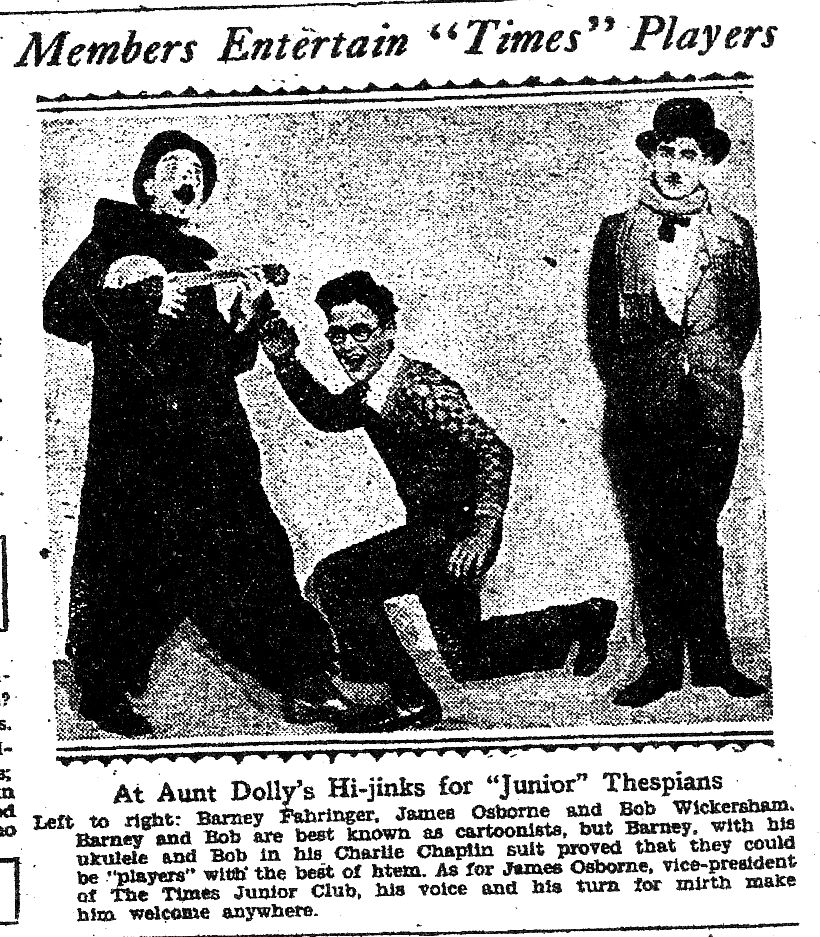
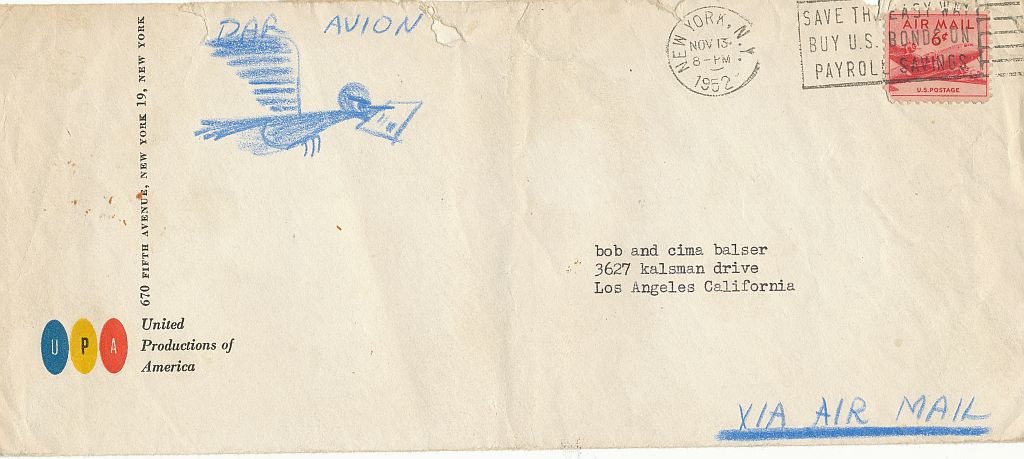

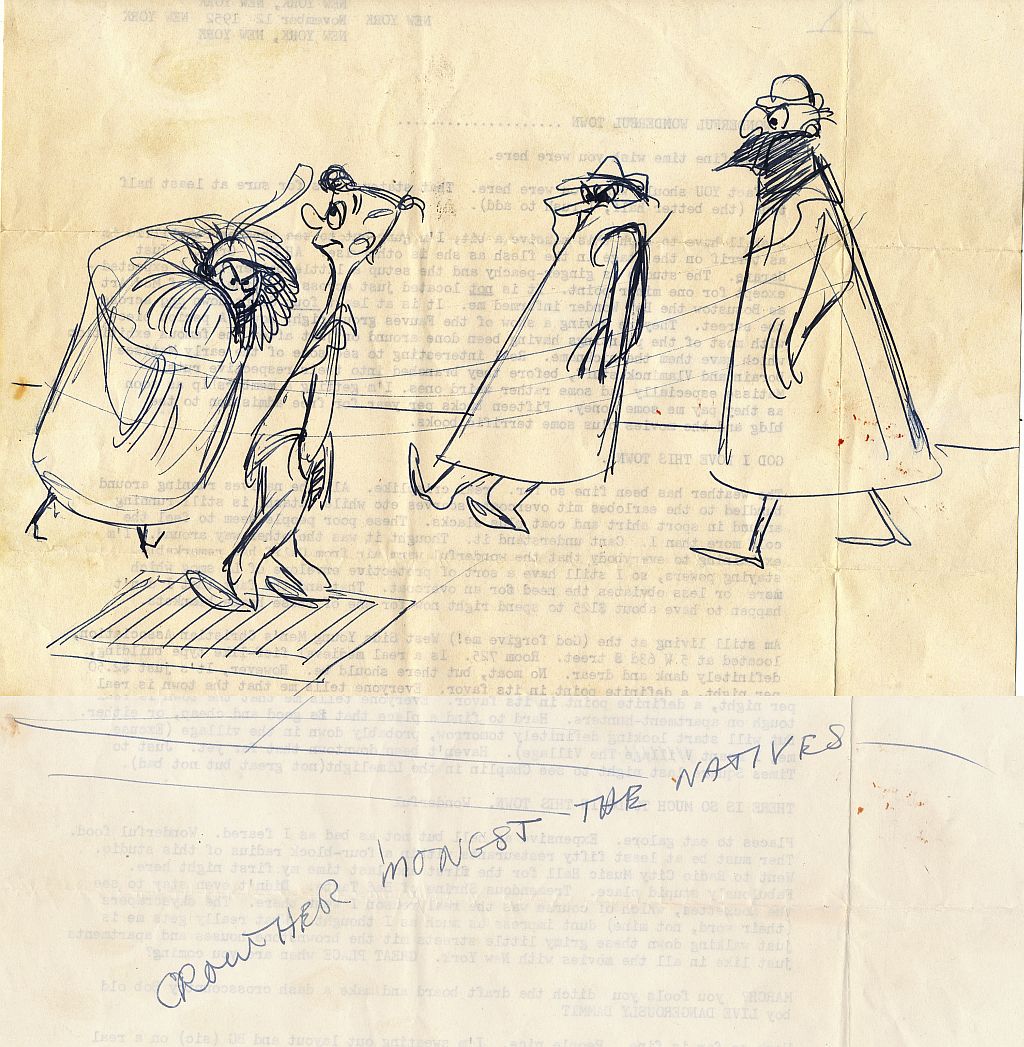
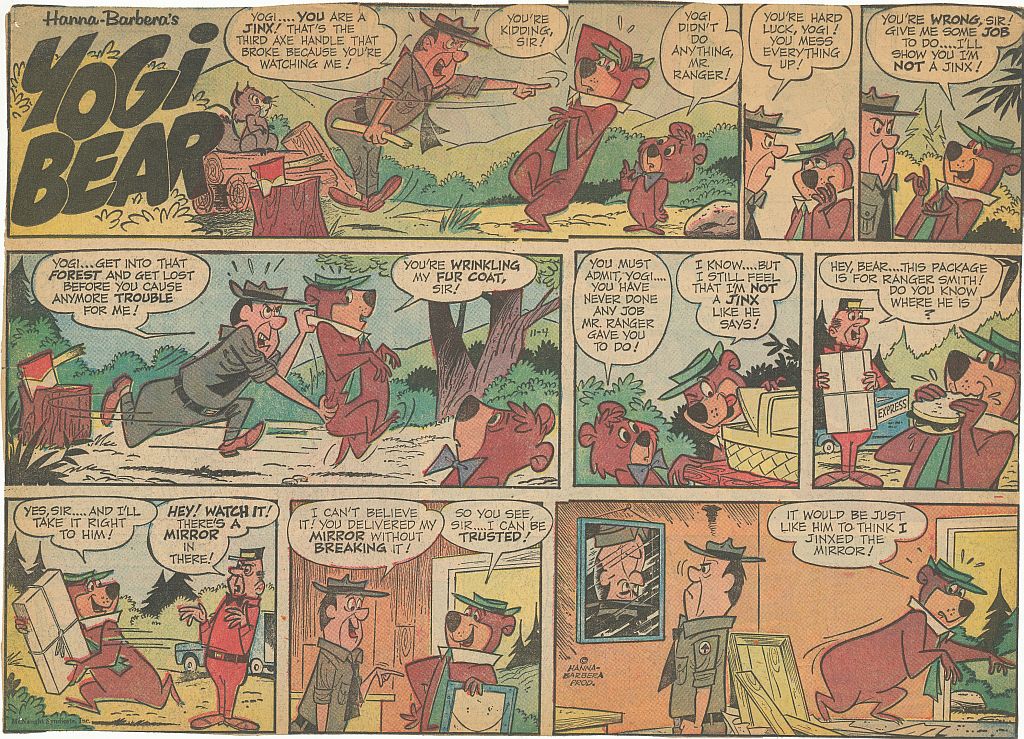



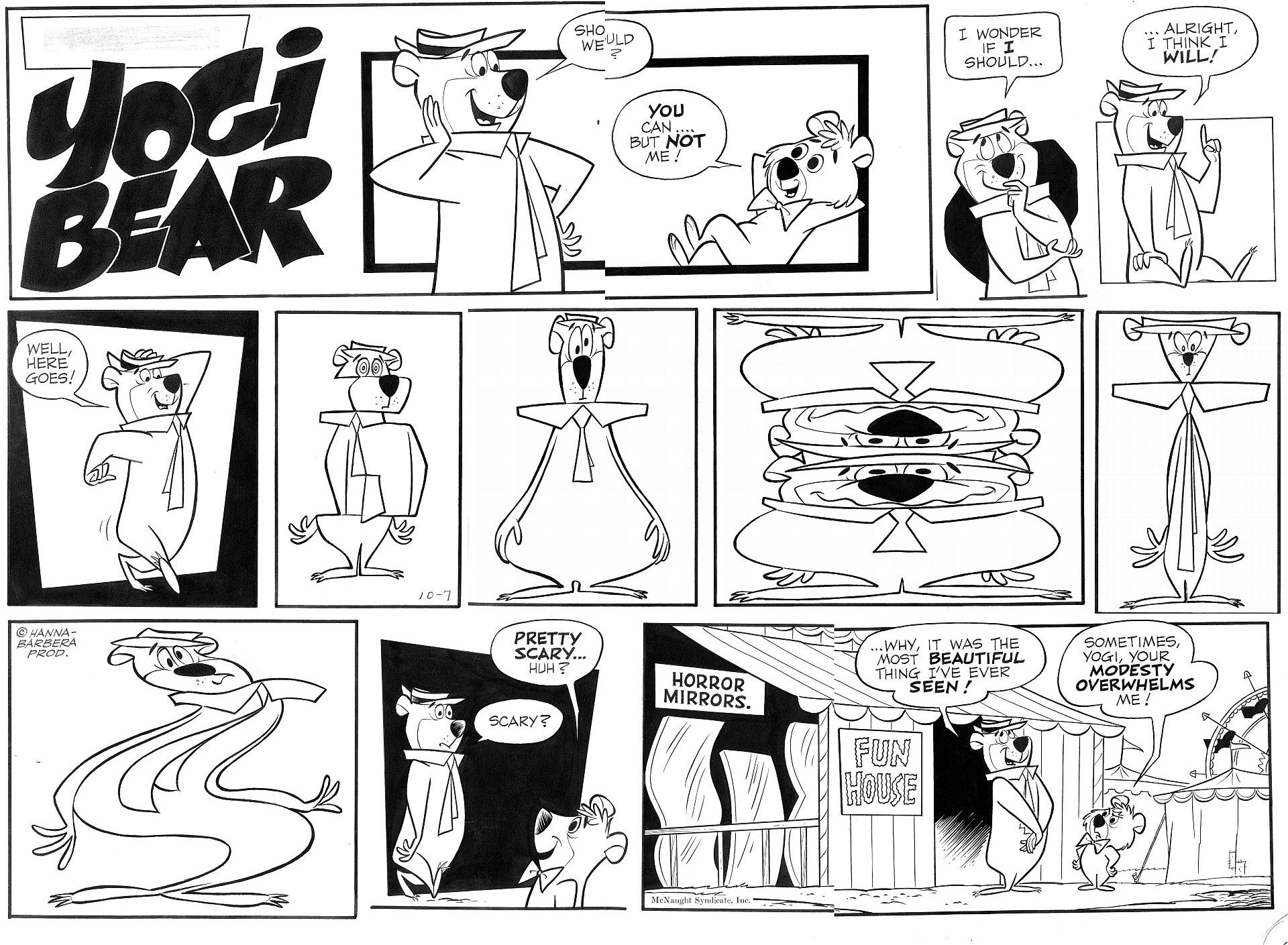
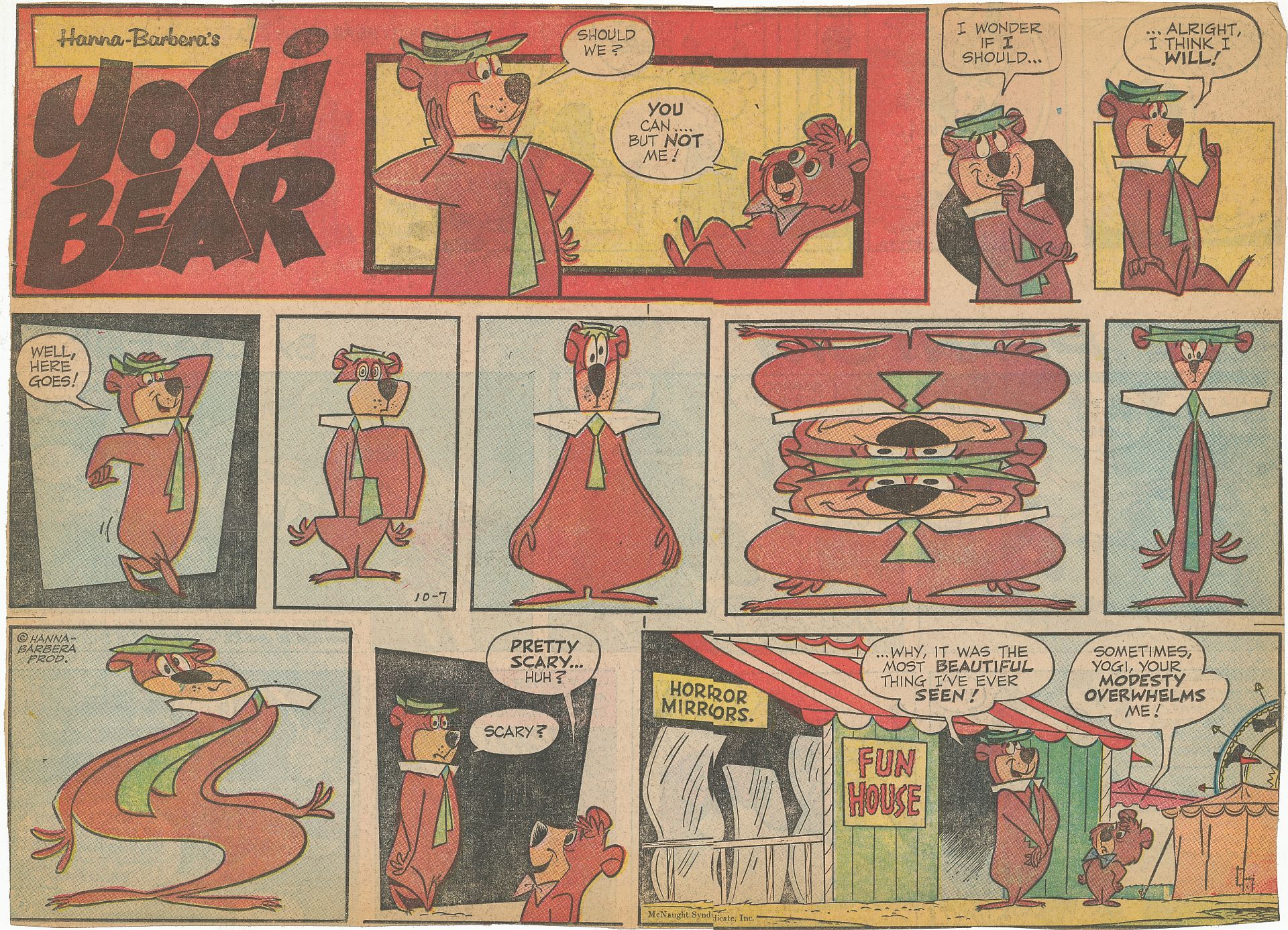

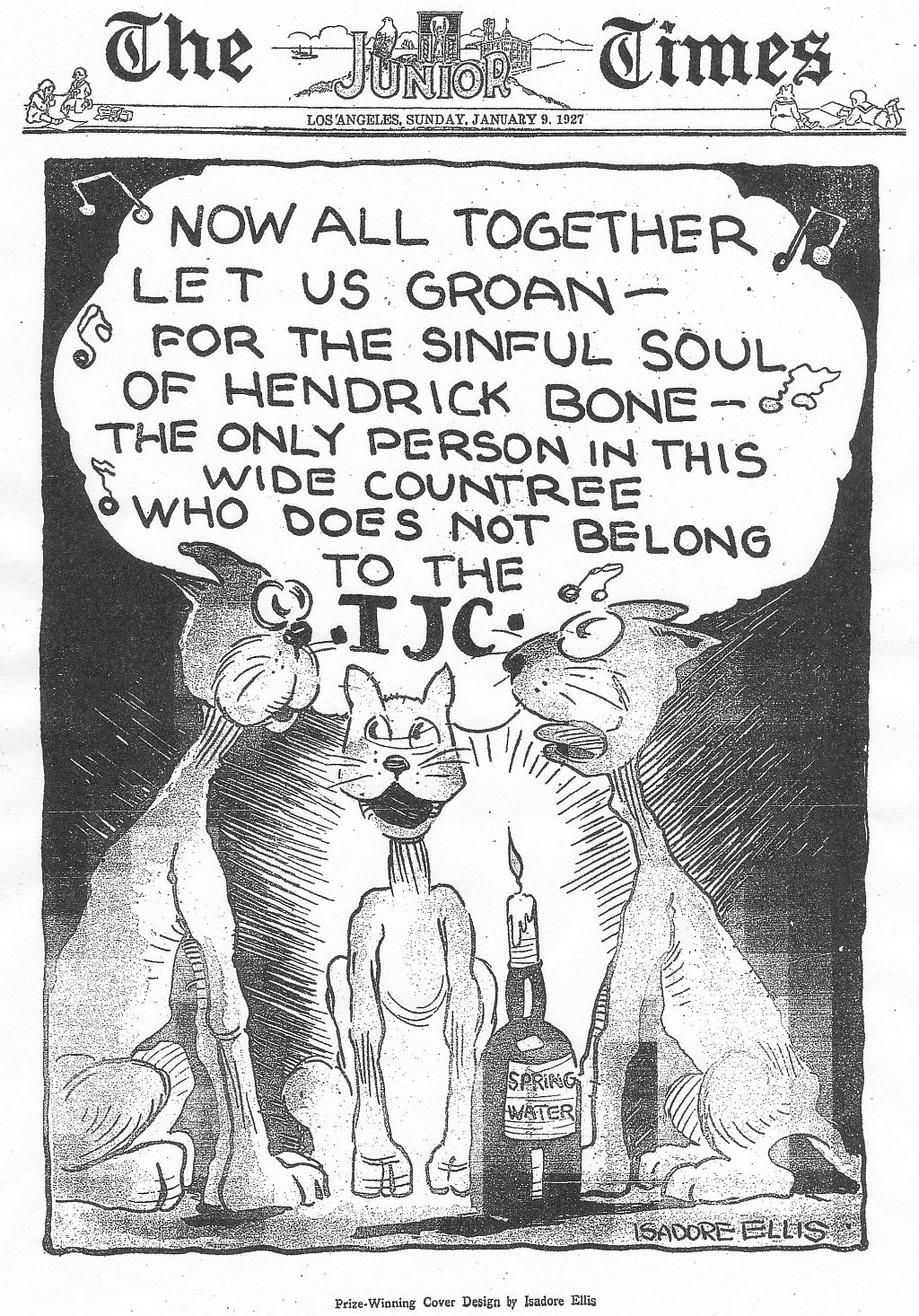
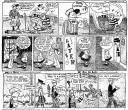

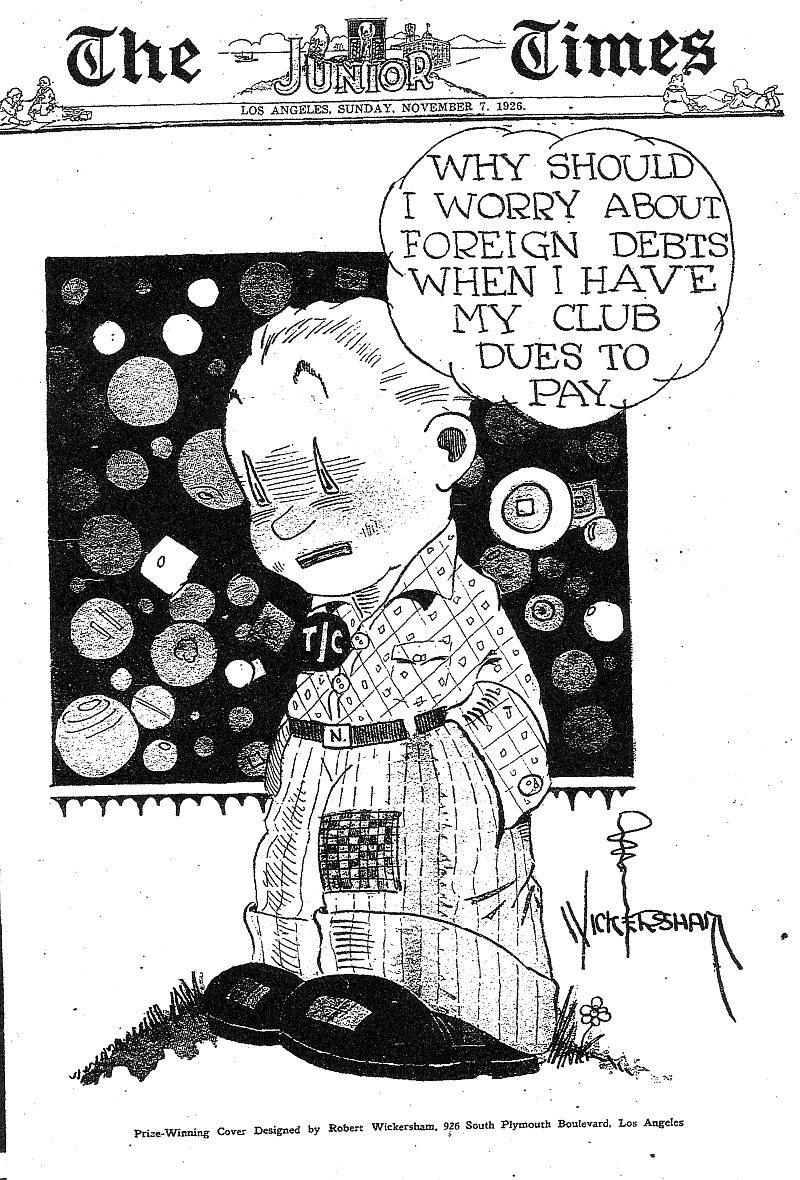

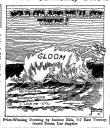







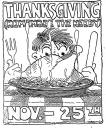
Your Comics Page
December 1, 2012
Uncategorized
4 Comments
Mark